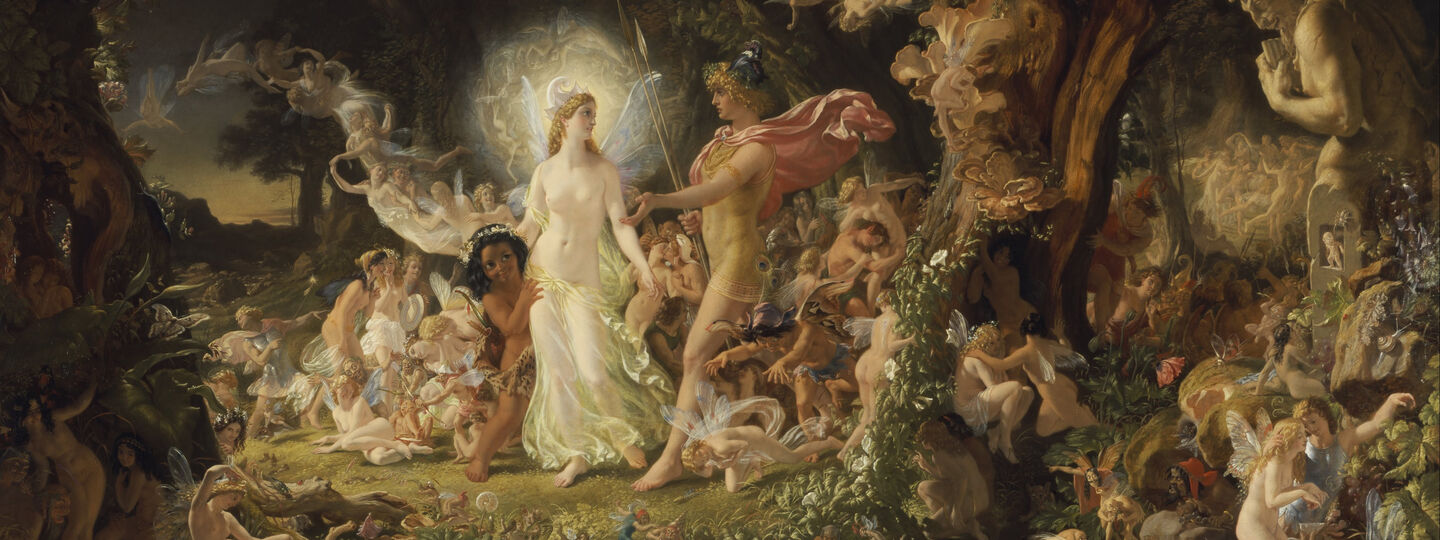
Info
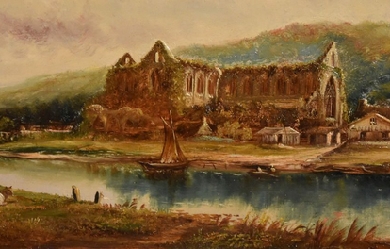
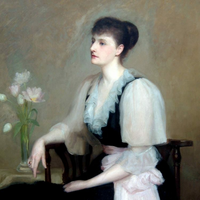
Violet Jacob (1 September 1863– 9 September 1946) was a Scottish writer, now known especially for her historical novel Flemington and her poetry, mainly in Scots. Life She was born Violet Augusta Mary Frederica Kennedy-Erskine, the daughter of William Henry Kennedy-Erskine (1 July 1828– 15 September 1870) of Dun, Forfarshire, a Captain in the 17th Lancers and Catherine Jones (d. 13 February 1914), the only daughter of William Jones of Henllys, Carmarthenshire. Her father was the son of John Kennedy-Erskine (1802–1831) of Dun and Augusta FitzClarence (1803–1865), the illegitimate daughter of King William IV and Dorothy Jordan. She was a great-granddaughter of Archibald Kennedy, 1st Marquess of Ailsa. The area of Montrose where her family seat of Dun was situated was the setting for much of her fiction. She married, on 27 October 1894, Arthur Otway Jacob, an Irish Major in the British Army, and accompanied him to India where he was serving. Her book Diaries and letters from India 1895-1900 is about their stay in the Central Indian town of Mhow. The couple had one son, Harry, born in 1895, who died as a soldier at the battle of the Somme in 1916. Arthur died in 1936, and Violet returned to live at Kirriemuir, in Angus. Scots poetry In her poetry Violet Jacob was associated with Scots revivalists like Marion Angus, Alexander Gray and Lewis Spence in the Scottish Renaissance, which drew its inspiration from early Scots poets such as Robert Henryson and William Dunbar, rather than from Robert Burns. She is commemorated in Makars’ Court, outside the Writers’ Museum, Lawnmarket, Edinburgh. Selections for Makars’ Court are made by the Writers’ Museum, The Saltire Society and The Scottish Poetry Library. The Wild Geese, which takes the form of a conversation between the poet and the North Wind, is a sad poem of longing for home. It was set to music as Norlan’ Wind and popularised by Angus singer and songmaker Jim Reid, who set to music other poems by Jacob and other Angus poets such as Marion Angus and Helen Cruikshank. Another popular version, sung by Cilla Fisher and Artie Trezise, appeared on their 1979 Topic Records album Cilla and Artie.
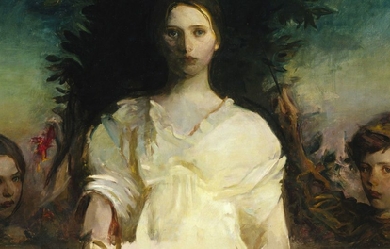

Lizelia Augusta Jenkins Moorer (September 1868 - May 24, 1936) was a poet and teacher in Orangeburg, South Carolina. She taught at the Normal and Grammar Schools, Claflin University, Orangeburg, South Carolina from 1895 to 1899. In 1907, she published a collection of poems, “Prejudice Unveiled and Other Poems”. Her work was called, by Joan R. Sherman, the “best poems on racial issues written by any black woman until the middle of the century”. Moorer attacks “lynching, debt peonage, white rape, Jim Crow segregation, and the hypocrisy of the church and the white press”. Moorer was born in September 1868 to Warren D. Jenkins and Mattie Miller in Pickens, South Carolina. In 1899, she married Jacob Moorer, an attorney in Orangeburg who frequently saw cases defending the rights of blacks against what he saw as a prejudiced legal system in South Carolina. In particular, he fought against the constitutionality of election law in the 1895 South Carolina Constitution. Lizelia was also a very strong activist. Beyond her poetry, she was active in the Woman’s Christian Temperance Union, serving as State Vice-President in South Carolina in 1910. In 1924, she attended the 1924 Methodist Episcopal Church General Conference where she gave a speech arguing that women should be allowed to be ordained within the Methodist Church. During that conference, women were, indeed, given the right to be ordained as local deacons and elders.
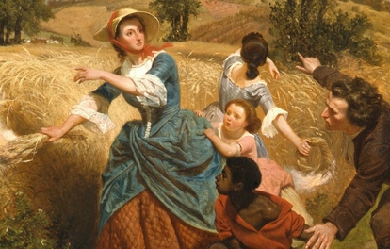
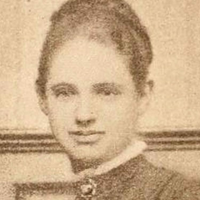
Mary Elizabeth Coleridge (23 September 1861– 25 August 1907) was a British novelist and poet who also wrote essays and reviews. She taught at the London Working Women’s College for twelve years from 1895 to 1907. She wrote poetry under the pseudonym Anodos, taken from George MacDonald; other influences on her were Richard Watson Dixon and Christina Rossetti. Robert Bridges, the Poet Laureate, described her poems as 'wonderously beautiful… but mystical rather and enigmatic’. Coleridge published five novels, the best known of those being The King with Two Faces, which earned her £900 in royalties in 1897. She travelled widely throughout her life, although her home was in London, where she lived with her family. Her father was Arthur Duke Coleridge who, along with the singer Jenny Lind, was responsible for the formation of the London Bach Choir in 1875. Other family friends included Robert Browning, Alfred, Lord Tennyson, John Millais and Fanny Kemble. Mary Coleridge was the great-grandniece of Samuel Taylor Coleridge and the great niece of Sara Coleridge, the author of Phantasmion. She died from complications arising from appendicitis while on holiday in Harrogate in 1907, leaving an unfinished manuscript for her next novel and hundreds of unpublished poems. Eight of her poems, including “The Blue Bird”, were set to music for chorus by Charles Villiers Stanford, and “Thy Hand in Mine” was set by Frank Bridge. A family friend, the composer Hubert Parry, also set several of her poems as songs for voice and piano. Published works Fancy’s Following. Oxford: Daniel, 1896 (poems) The King with Two Faces. London: Edward Arnold, 1897 The Seven Sleepers of Ephesus. London: Chatto & Windus, 1898 Non Sequitur. London: J. Nisbet, 1900 (essays) The Fiery Dawn. London: Edward Arnold, 1901 The Shadow on the Wall: a romance. London: Edward Arnold, 1904 The Lady on the Drawingroom Floor. London: Edward Arnold, 1906kiren Holman Hunt. London: T. C. & E. C. Jack; New York: F. A. Stokes Co., [1908] (three numbers of Masterpieces in Colour issued together: Millais / by A. L. Baldry– Holman Hunt / by M. E. Coleridge– Rossetti / by L. Pissarro.) Poems by Mary E. Coleridge. London: Elkin Mathews, 1908 Songs not listed
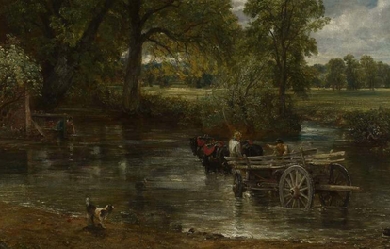
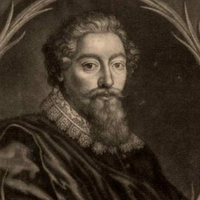
Francis Beaumont (1584– 6 March 1616) was a dramatist in the English Renaissance theatre, most famous for his collaborations with John Fletcher. Beaumont was the son of Sir Francis Beaumont of Grace Dieu, near Thringstone in Leicestershire, a justice of the common pleas. His mother was Anne, the daughter of Sir George Pierrepont (d. 1564), of Holme Pierrepont, and his wife Winnifred Twaits. Beaumont was born at the family seat and was educated at Broadgates Hall (now Pembroke College, Oxford) at age thirteen. Following the death of his father in 1598, he left university without a degree and followed in his father’s footsteps by entering the Inner Temple in London in 1600. Accounts suggest that Beaumont did not work long as a lawyer. He became a student of poet and playwright Ben Jonson; he was also acquainted with Michael Drayton and other poets and dramatists, and decided that was where his passion lay. His first work, Salmacis and Hermaphroditus, appeared in 1602. The 1911 edition of the Encyclopædia Britannica describes the work as “not on the whole discreditable to a lad of eighteen, fresh from the popular love-poems of Marlowe and Shakespeare, which it naturally exceeds in long-winded and fantastic diffusion of episodes and conceits.” In 1605, Beaumont wrote commendatory verses to Jonson’s Volpone. Beaumont’s collaboration with Fletcher may have begun as early as 1605. They had both hit an obstacle early in their dramatic careers with notable failures; Beaumont’s The Knight of the Burning Pestle, first performed by the Children of the Blackfriars in 1607, was rejected by an audience who, the publisher’s epistle to the 1613 quarto claims, failed to note “the privie mark of irony about it;” that is, they took Beaumont’s satire of old-fashioned drama as an old-fashioned drama. The play received a lukewarm reception. The following year, Fletcher’s Faithful Shepherdess failed on the same stage. In 1609, however, the two collaborated on Philaster, which was performed by the King’s Men at the Globe Theatre and at Blackfriars. The play was a popular success, not only launching the careers of the two playwrights but also sparking a new taste for tragicomedy. According to a mid-century anecdote related by John Aubrey, they lived in the same house on the Bankside in Southwark, “sharing everything in the closest intimacy.” About 1613 Beaumont married Ursula Isley, daughter and co-heiress of Henry Isley of Sundridge in Kent, by whom he had two daughters, one posthumous. He had a stroke between February and October 1613, after which he wrote no more plays, but was able to write an elegy for Lady Penelope Clifton, who died 26 October 1613. Beaumont died in 1616 and was buried in Westminster Abbey. Although today Beaumont is remembered as a dramatist, during his lifetime he was also celebrated as a poet. Beaumont’s plays It was once written of Beaumont and Fletcher that “in their joint plays their talents are so... completely merged into one, that the hand of Beaumont cannot clearly be distinguished from that of Fletcher.” Yet this romantic notion did not stand up to critical examination. In the seventeenth century, Sir Aston Cockayne, a friend of Fletcher’s, specified that there were many plays in the 1647 Beaumont and Fletcher folio that contained nothing of Beaumont’s work, but rather featured the writing of Philip Massinger. Nineteenth– and twentieth-century critics like E. H. C. Oliphant subjected the plays to a self-consciously literary, and often subjective and impressionistic, reading—but nonetheless began to differentiate the hands of the collaborators. This study was carried much farther, and onto a more objective footing, by twentieth-century scholars, especially Cyrus Hoy. Short of absolute certainty, a critical consensus has evolved on many plays in the canon of Fletcher and his collaborators; in regard to Beaumont, the schema below is among the least controversial that has been drawn. By Beaumont alone: The Knight of the Burning Pestle, comedy (performed 1607; printed 1613) The Masque of the Inner Temple and Gray’s Inn, masque (performed 20 February 1613; printed 1613?) With Fletcher: The Woman Hater, comedy (1606; 1607) Cupid’s Revenge, tragedy (c. 1607–12; 1615) Philaster, or Love Lies a-Bleeding, tragicomedy (c. 1609; 1620) The Maid’s Tragedy, tragedy (c. 1609; 1619) A King and No King, tragicomedy (1611; 1619) The Captain, comedy (c. 1609–12; 1647) The Scornful Lady, comedy (ca. 1613; 1616) Love’s Pilgrimage, tragicomedy (c. 1615–16; 1647) The Noble Gentleman, comedy (licensed 3 February 1626; 1647) Beaumont/Fletcher plays, later revised by Massinger: Thierry and Theodoret, tragedy (c. 1607?; 1621) The Coxcomb, comedy (c. 1608–10; 1647) Beggars’ Bush, comedy (c. 1612–13?; revised 1622?; 1647) Love’s Cure, comedy (c. 1612–13?; revised 1625?; 1647) Because of Fletcher’s highly distinctive and personal pattern of linguistic preferences and contractional forms (ye for you, 'em for them, etc.), his hand can be distinguished fairly easily from Beaumont’s in their collaborations. In A King and No King, for example, Beaumont wrote all of Acts I, II, and III, plus scenes IV.iv and V.ii and iv; Fletcher wrote only the first three scenes in Act IV (IV, i-iii) and the first and third scenes in Act V (V, i and iii)—so that the play is more Beaumont’s than Fletcher’s. The same is true of The Woman Hater, The Maid’s Tragedy, The Noble Gentleman, and Philaster. On the other hand, Cupid’s Revenge, The Coxcomb, The Scornful Lady, Beggar’s Bush, and The Captain are more Fletcher’s than Beaumont’s. In Love’s Cure and Thierry and Theodoret, the influence of Massinger’s revision complicates matters; but in those plays too, Fletcher appears to be the majority contributor, Beaumont the minority. References Wikipedia—https://en.wikipedia.org/wiki/Francis_Beaumont
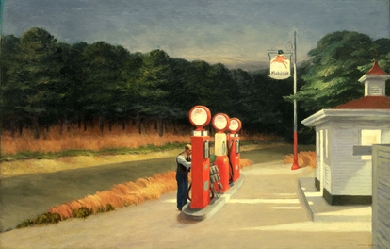

Mark Strand (April 11, 1934– November 29, 2014) was a Canadian-born American poet, essayist and translator. He was appointed Poet Laureate Consultant in Poetry to the Library of Congress in 1990 and received the Wallace Stevens Award in 2004. Strand was a professor of English and Comparative Literature at Columbia University from 2005 until his death in 2014. Biography Strand was born in 1934 at Summerside, Prince Edward Island, Canada. Raised in a secular Jewish family, he spent his early years in North America and much of his adolescence in South and Central America. Strand graduated from Oakwood Friends School in 1951 and in 1957 earned his B.A. from Antioch College in Ohio. He then studied painting under Josef Albers at Yale University, where he earned a B.F.A in 1959. On a U.S.-Italy Fulbright Commission scholarship, Strand studied 19th-century Italian poetry in Florence in 1960–61. He attended the Iowa Writers’ Workshop at the University of Iowa the following year and earned a Master of Arts in 1962. In 1965 he spent a year in Brazil as a Fulbright Lecturer. In 1981, Strand was elected a member of The American Academy of Arts and Letters. He served as Poet Laureate Consultant in Poetry to the Library of Congress during the 1990–91 term. In 1997, he left Johns Hopkins University to accept the Andrew MacLeish Distinguished Service Professorship of Social Thought at the Committee on Social Thought at the University of Chicago. From 2005 to his death, Strand taught literature and creative writing at Columbia University, in New York City. Strand received numerous awards, including a MacArthur Fellowship in 1987 and the 1999 Pulitzer Prize for Poetry, for Blizzard of One. Strand died of liposarcoma on November 29, 2014, in Brooklyn, New York. Poetry Many of Strand’s poems are nostalgic in tone, evoking the bays, fields, boats, and pines of his Prince Edward Island childhood. Strand has been compared to Robert Bly in his use of surrealism, though he attributes the surreal elements in his poems to an admiration of the works of Max Ernst, Giorgio de Chirico, and René Magritte. Strand’s poems use plain and concrete language, usually without rhyme or meter. In a 1971 interview, Strand said, “I feel very much a part of a new international style that has a lot to do with plainness of diction, a certain reliance on surrealist techniques, and a strong narrative element.” Academic career Strand’s academic career took him to various colleges and universities, including: Teaching positions University of Iowa, Iowa City, instructor in English, 1962–1965 University of Brazil, Rio de Janeiro, Fulbright lecturer, 1965–1966 Mount Holyoke College, South Hadley, MA, assistant professor, 1967 Columbia University, New York City, adjunct associate professor, 1969–1972 Brooklyn College of the City University of New York, New York City, associate professor, 1970–1972 Princeton University, Princeton, NJ, Bain-Swiggett Lecturer, 1973 Brandeis University, Hurst professor of poetry, 1974–1975 University of Utah, Salt Lake City, professor of English, 1981–1993 Johns Hopkins University, Elliot Coleman Professor of Poetry, 1994–c. 1998 University of Chicago, Committee on Social Thought, 1998– ca. 2005 Columbia University, New York City, professor of English and Comparative Literature, ca. 2005–2014 Visiting professor University of Washington, 1968, 1970 Columbia University, 1980 Yale University, 1969–1970 University of Virginia, 1976, 1978 California State University at Fresno, 1977 University of California at Irvine, 1979 Wesleyan University, 1979 Harvard University, 1980 Awards * Strand has been awarded the following: * 1960–1961: Fulbright Fellowship * 1979: Fellowship of the Academy of American Poets * 1987: MacArthur Fellowship * 1990–1991: Poet Laureate Consultant in Poetry to the Library of Congress * 1992: Bobbitt National Prize for Poetry * 1993: Bollingen Prize * 1999: Pulitzer Prize, for Blizzard of One * 2004: Wallace Stevens Award * 2009: Gold Medal in Poetry, from the American Academy of Arts and Letters Bibliography References Wikipedia—https://en.wikipedia.org/wiki/Mark_Strand
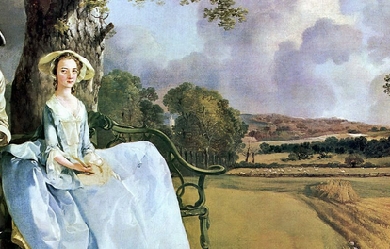
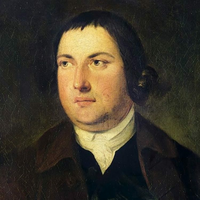
Charles Churchill (February, 1732– 4 November 1764), was an English poet and satirist. Early life Churchill was born in Vine Street, Westminster. His father, rector of Rainham, Essex, held the curacy and lectureship of St Johns, Westminster, from 1733, and Charles was educated at Westminster School, where he became a good classical scholar, and formed a close and lasting friendship with Robert Lloyd. He was admitted to St John’s College, Cambridge on 8 July 1748. Churchill contracted a marriage within the rules of the Fleet in his eighteenth year, and never lived at Cambridge; the young couple lived in his father’s house, and Churchill was afterwards sent to the north of England to prepare for holy orders. He became curate of South Cadbury, Somerset, and, on receiving priest’s orders (1756), began to act as his father’s curate at Rainham. Two years later the elder Churchill died, and the son was elected to succeed him in his curacy and lectureship. His emoluments amounted to less than £100 a year, and he increased his income by teaching in a girls’ school. His marriage proved unhappy, and he began to spend much of his time in dissipation in the society of Robert Lloyd. He was separated from his wife in 1761, and would have been imprisoned for debt but for the timely help of Lloyd’s father, who had been an usher and was now a master at Westminster. Career as Satirist Churchill had already done some work for the booksellers, and his friend Lloyd had had some success with a didactic poem, The Actor. Churchill’s knowledge of the theatre was now made use of in the Rosciad, which appeared in March 1761. This reckless and amusing satire described with the most disconcerting accuracy the faults of the various actors and actresses on the London stage; in a competition judged by Shakespeare and Jonson, Garrick is named the greatest English actor. Its immediate popularity was no doubt largely due to its personal character, but its vigour and raciness make it worth reading even now when the objects of Churchill’s wit are forgotten. The first impression was published anonymously, and in the Critical Review, conducted by Tobias Smollett, it was confidently asserted that the poem was the joint production of George Colman the Elder, Bonnell Thornton and Robert Lloyd. Churchill immediately published an Apology addressed to the Critical Reviewers, which, after developing the subject that it is only authors who prey on their own kind, repeats the fierce attack on the stage. Incidentally it contains an enthusiastic tribute to John Dryden, of whom Churchill was a devotee. In the Rosciad he had praised Mrs Pritchard, Mrs Cibber and Mrs Clive, but no leading London actor, with the exception of David Garrick, had escaped censure, and in the Apology Garrick was clearly threatened. He deprecated criticism by showing every possible civility to Churchill, who became a terror to the actors. Thomas Davies wrote to Garrick attributing his blundering in the part of Cymbeline “to my accidentally seeing Mr Churchill in the pit, it rendering me confused and unmindful of my business.” Churchill’s satire made him many enemies, and brought reprisals. In Night, an Epistle to Robert Lloyd (1761), he answered the attacks made on him, offering by way of defense the argument that any faults were better than hypocrisy. His scandalous conduct brought down the censure of the dean of Westminster, and in 1763 the protests of his parishioners led him to resign his offices, and he was free to wear his blue coat with metal buttons and much gold lace without remonstrance from the dean. The Rosciad had been refused by several publishers, and was finally published at Churchill’s own expense. He received a considerable sum from the sale, and paid his old creditors in full, besides making an allowance to his wife. Friendship with Wilkes He now became a close ally of John Wilkes, whom he regularly assisted with The North Briton weekly newspaper. His next poem, The Prophecy of Famine: A Scots Pastoral (1763), was founded on a paper written originally for that newspaper. This violent satire on Scottish influence fell in with the current hatred of Lord Bute, and the Scottish place-hunters were as much alarmed as the actors had been. When Wilkes was arrested he gave Churchill a timely hint to retire to the country for a time, the publisher, Kearsley, having stated that he received part of the profits from the paper. His Epistle to William Hogarth (1763) was in answer to the caricature of Wilkes made during the trial, in it Hogarth’s vanity and envy were attacked in an invective which Garrick quoted as shocking and barbarous. Hogarth retaliated by a caricature of Churchill as a bear in torn clerical bands hugging a pot of porter and a club made of lies and North Britons. The Duellist (1763) is a virulent satire on the most active opponents of Wilkes in the House of Lords, especially on Bishop Warburton. He attacked Dr Johnson among others in The Ghost as “Pomposo, insolent and loud, Vain idol of a scribbling crowd”. Other poems are The Conference (1763); The Author (1763), highly praised by Churchill’s contemporaries; Gotham (1764), a poem on the duties of a king, didactic rather than satiric in tone; The Candidate (1764), a satire on John Montagu, fourth earl of Sandwich, one of Wilkes’s bitterest enemies, whom he had already denounced for his treachery in The Duellist (Bk. iii.) as too infamous to have a friend; The Farewell (1764); The Times (1764); Independence, and an unfinished Journey. Death and Legacy In October 1764 he went to Boulogne to join Wilkes. There he was attacked by a fever of which he died on 4 November. He left his property to his two sons, and made Wilkes his literary executor with full powers. Wilkes did little. He wrote an epitaph for his friend and about half a dozen notes on his poems, and Andrew Kippis acknowledges some slight assistance from him in preparing his life of Churchill for the Biographia (1780). There is more than one instance of Churchill’s generosity to his friends. In 1763 he found his friend Robert Lloyd in prison for debt. He paid a guinea a week for his better maintenance in the Fleet, and raised a subscription to set him free. Lloyd fell ill on receipt of the news of Churchill’s death, and died shortly afterwards. Churchill’s sister Patty, who was engaged to Lloyd, did not long survive them. William Cowper was his schoolfellow, and left many kindly references to him. A partial collection of Churchill’s poems appeared in 1763. References Wikipedia—https://en.wikipedia.org/wiki/Charles_Churchill_(satirist)
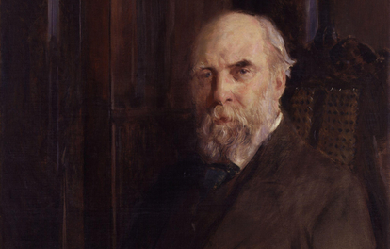

William Cosmo Monkhouse (18 March 1840– 20 July 1901) was an English poet and critic. He was born in London. His father, Cyril John Monkhouse, was a solicitor; his mother’s maiden name was Delafosse. He was educated at St Paul’s School, quitting it at seventeen to enter the board of trade as a junior supplementary clerk, from which grade he rose eventually to be the assistant-secretary to the finance department of the office. In 1870–71 he visited South America in connection with the hospital accommodation for seamen at Valparaíso, Chile, and other ports; and he served on different departmental committees, notably that of 1894–96 on the Mercantile Marine Fund. He was twice married: first, to Laura, daughter of James Keymer of Dartford; and, secondly, to Leonora Eliza, daughter of Commander Blount, R.N.
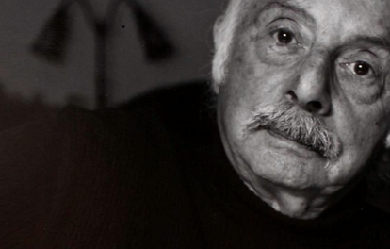

Stanley Jasspon Kunitz (July 29, 1905 – May 14, 2006) was an American poet. He was appointed Poet Laureate Consultant in Poetry to the Library of Congress twice, first in 1974 and then again in 2000. Biography Kunitz was born in Worcester, Massachusetts, the youngest of three children, to Yetta Helen (née Jasspon) and Solomon Z. Kunitz, both of Jewish Russian Lithuanian descent.His father, a dressmaker of Russian Jewish heritage, committed suicide in a public park six weeks before Stanley was born. After going bankrupt, he went to Elm Park in Worcester, and drank carbolic acid. His mother removed every trace of Kunitz’s father from the household. The death of his father would be a powerful influence of his life.Kunitz and his two older sisters, Sarah and Sophia, were raised by his mother, who had made her way from Yashwen, Kovno, Lithuania by herself in 1890, and opened a dry goods store. Yetta remarried to Mark Dine in 1912. Yetta and Mark filed for bankruptcy in 1912 and then were indicted by the U.S. District Court for concealing assets. They pleaded guilty and turned over USD$10,500 to the trustees. Mark Dine died when Kunitz was fourteen, when, while hanging curtains, he suffered a heart attack.At fifteen, Kunitz moved out of the house and became a butcher’s assistant. Later he got a job as a cub reporter on The Worcester Telegram, where he would continue working during his summer vacations from college.Kunitz graduated summa cum laude in 1926 from Harvard College with an English major and a philosophy minor, and then earned a master’s degree in English from Harvard the following year. He wanted to continue his studies for a doctorate degree, but was told by the university that the Anglo-Saxon students would not like to be taught by a Jew.After Harvard, he worked as a reporter for The Worcester Telegram, and as editor for the H. W. Wilson Company in New York City. He then founded and edited Wilson Library Bulletin and started the Author Biographical Studies. Kunitz married Helen Pearce in 1930; they divorced in 1937. In 1935 he moved to New Hope, Pennsylvania and befriended Theodore Roethke. He married Eleanor Evans in 1939; they had a daughter Gretchen in 1950. Kunitz divorced Eleanor in 1958.At Wilson Company, Kunitz served as co-editor for Twentieth Century Authors, among other reference works. In 1931, as Dilly Tante, he edited Living Authors, a Book of Biographies. His poems began to appear in Poetry, Commonweal, The New Republic, The Nation, and The Dial. During World War II, he was drafted into the Army in 1943 as a conscientious objector, and after undergoing basic training three times, served as a noncombatant at Gravely Point, Washington in the Air Transport Command in charge of information and education. He refused a commission and was discharged with the rank of staff sergeant.After the war, he began a peripatetic teaching career at Bennington College (1946–1949; taking over from his friend Roethke). He subsequently taught at the State University of New York at Potsdam (then the New York State Teachers College at Potsdam) as a full professor (1949-1950; summer sessions through 1954), the New School for Social Research (lecturer; 1950-1957), the University of Washington (visiting professor; 1955-1956), Queens College (visiting professor; 1956-1957), Brandeis University (poet-in-residence; 1958-1959) and Columbia University (lecturer in the School of General Studies; 1963-1966) before spending 18 years as an adjunct professor of writing at Columbia’s School of the Arts (1967-1985). Throughout this period, he also held visiting appointments at Yale University (1970), Rutgers University–Camden (1974), Princeton University (1978) and Vassar College (1981).After his divorce from Eleanor, he married the painter and poet Elise Asher in 1958. His marriage to Asher led to friendships with artists like Philip Guston and Mark Rothko.Kunitz’s poetry won wide praise for its profundity and quality. He was the New York State Poet Laureate from 1987 to 1989. He continued to write and publish until his centenary year, as late as 2005. Many consider that his poetry’s symbolism is influenced significantly by the work of Carl Jung. Kunitz influenced many 20th-century poets, including James Wright, Mark Doty, Louise Glück, Joan Hutton Landis, and Carolyn Kizer. For most of his life, Kunitz divided his time between New York City and Provincetown, Massachusetts. He enjoyed gardening and maintained one of the most impressive seaside gardens in Provincetown. There he also founded Fine Arts Work Center, where he was a mainstay of the literary community, as he was of Poets House in Manhattan. He was awarded the Peace Abbey Courage of Conscience award in Sherborn, Massachusetts in October 1998 for his contribution to the liberation of the human spirit through his poetry.He died in 2006 at his home in Manhattan. He had previously come close to death, and reflected on the experience in his last book, a collection of essays, The Wild Braid: A Poet Reflects on a Century in the Garden. Poetry Kunitz’s first collection of poems, Intellectual Things, was published in 1930. His second volume of poems, Passport to the War, was published fourteen years later; the book went largely unnoticed, although it featured some of Kunitz’s best-known poems, and soon fell out of print. Kunitz’s confidence was not in the best of shape when, in 1959, he had trouble finding a publisher for his third book, Selected Poems: 1928-1958. Despite this unflattering experience, the book, eventually published by Little Brown, received the Pulitzer Prize for Poetry. His next volume of poems would not appear until 1971, but Kunitz remained busy through the 1960s editing reference books and translating Russian poets. When twelve years later The Testing Tree appeared, Kunitz’s style was radically transformed from the highly intellectual and philosophical musings of his earlier work to more deeply personal yet disciplined narratives; moreover, his lines shifted from iambic pentameter to a freer prosody based on instinct and breath—usually resulting in shorter stressed lines of three or four beats. Throughout the 70s and 80s, he became one of the most treasured and distinctive voices in American poetry. His collection Passing Through: The Later Poems won the National Book Award for Poetry in 1995. Kunitz received many other honors, including a National Medal of Arts, the Bollingen Prize for a lifetime achievement in poetry, the Robert Frost Medal, and Harvard’s Centennial Medal. He served two terms as Consultant on Poetry for the Library of Congress (the precursor title to Poet Laureate), one term as Poet Laureate of the United States, and one term as the State Poet of New York. He founded the Fine Arts Work Center in Provincetown, Massachusetts, and Poets House in New York City. Kunitz also acted as a judge for the Yale Series of Younger Poets Competition. Library Bill of Rights Kunitz served as editor of the Wilson Library Bulletin from 1928 to 1943. An outspoken critic of censorship, in his capacity as editor, he targeted his criticism at librarians who did not actively oppose it. He published an article in 1938 by Bernard Berelson entitled “The Myth of Library Impartiality”. This article led Forrest Spaulding and the Des Moines Public Library to draft the Library Bill of Rights, which was later adopted by the American Library Association and continues to serve as the cornerstone document on intellectual freedom in libraries. Awards and honors * 2006 L.L. Winship/PEN New England Award, The Wild Braid: A Poet Reflects on a Century in the Garden Bibliography * * Poetry * The Wild Braid: A Poet Reflects on a Century in the Garden (2005) * The Collected Poems of Stanley Kunitz (NY: W. W. Norton & Company, 2000) * Passing Through, The Later Poems, New and Selected (NY: W. W. Norton & Company, 1995)—winner of the National Book Award * Next-to-Last Things: New Poems and Essays (1985) * The Wellfleet Whale and Companion Poems * The Terrible Threshold * The Coat without a Seam * The Poems of Stanley Kunitz (1928–1978) (1978) * The Testing-Tree (1971) * Selected Poems, 1928-1958 (1958) * Passport to the War (1944) * Intellectual Things (1930)Other writing and interviews: * Conversations with Stanley Kunitz (Jackson, MS: University Press of Mississippi, Literary Conversations Series, 11/2013), Edited by Kent P. Ljungquist * A Kind of Order, A Kind of Folly: Essays and Conversations’ * Interviews and Encounters with Stanley Kunitz (Riverdale-on-Hudson, NY: The Sheep Meadow Press, 1995), Edited by Stanley MossAs editor, translator, or co-translator: * The Essential Blake * Orchard Lamps by Ivan Drach * Story under full sail by Andrei Voznesensky * Poems of John Keats * Poems of Akhmatova by Max Hayward References Wikipedia—https://en.wikipedia.org/wiki/Stanley_Kunitz
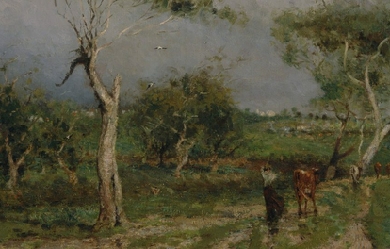
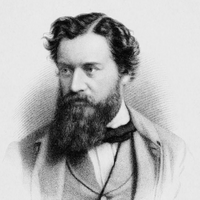
Charles Stuart Calverley (/ˈkɑːvərlɪ/; 22 December 1831– 17 February 1884) was an English poet and wit. He was the literary father of what has been called “the university school of humour”. Early life He was born at Martley, Worcestershire, and given the name Charles Stuart Blayds. In 1852, his father, the Rev. Henry Blayds, resumed the old family name of Calverley, which his grandfather had exchanged for Blayds in 1807. Charles went up to Balliol College, Oxford from Harrow School in 1850, and was soon known in Oxford as the most daring and high-spirited undergraduate of his time. He was a universal favourite, a delightful companion, a brilliant scholar and the playful enemy of all “dons.” In 1851 he won the Chancellor’s prize for Latin verse, but it is said that the entire exercise was written in an afternoon, when his friends had locked him into his rooms, refusing to let him out until he had finished what they were confident would prove the prize poem. A year later, to avoid the consequences of a college escapade (he had been expelled from Oxford), he too changed his name to Calverley and moved to Christ’s College, Cambridge. Here he was again successful in Latin verse, the only undergraduate to have won the Chancellor’s prize at both universities. In 1856 he took second place in the first class in the Classical Tripos. Later life He was elected fellow of Christ’s (1858), published Verses and Translations in 1862, and was called to the bar in 1865. Injuries sustained in a skating accident prevented him from following a professional career, and during the last years of his life he was an invalid. He died of Bright’s disease. Works * Nowadays he is best-known (at least in Cambridge, his adoptive home) as the author of the Ode to Tobacco which is to be found on a bronze plaque in Rose crescent, on the wall of what used to be Bacon’s the tobacconist. * His Translations into English and Latin appeared in 1866; his Theocritus translated into English Verse in 1869; Fly Leaves in 1872; and Literary Remains in 1885. * His Complete Works, with a biographical notice by Walter Joseph Sendall, a contemporary at Christ’s and his brother-in-law, appeared in 1901. * George W. E. Russell said of him: * He was a true poet; he was one of the most graceful scholars that Cambridge ever produced; and all his exuberant fun was based on a broad and strong foundation of Greek, Latin, and English literature. References Wikipedia—https://en.wikipedia.org/wiki/Charles_Stuart_Calverley
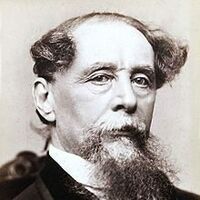
Charles John Huffam Dickens (7 February 1812 – 9 June 1870) was an English writer and social critic who is generally regarded as the greatest novelist of the Victorian period and the creator of some of the world's most memorable fictional characters. During his lifetime Dickens' works enjoyed unprecedented popularity and fame, but it was in the twentieth century that his literary genius was fully recognized by critics and scholars. His novels and short stories continue to enjoy an enduring popularity among the general reading public. Born in Portsmouth, England, Dickens left school to work in a factory after his father was thrown into debtors' prison. Though he had little formal education, his early impoverishment drove him to succeed. He edited a weekly journal for 20 years, wrote 15 novels and hundreds of short stories and non-fiction articles, lectured and performed extensively, was an indefatigable letter writer, and campaigned vigorously for children's rights, education, and other social reforms. Dickens rocketed to fame with the 1836 serial publication of The Pickwick Papers. Within a few years he had become an international literary celebrity, celebrated for his humour, satire, and keen observation of character and society. His novels, most published in monthly or weekly instalments, pioneered the serial publication of narrative fiction, which became the dominant Victorian mode for novel publication. The instalment format allowed Dickens to evaluate his audience's reaction, and he often modified his plot and character development based on such feedback. For example, when his wife's chiropodist expressed distress at the way Miss Mowcher in David Copperfield seemed to reflect her disabilities, Dickens went on to improve the character with positive lineaments. Fagin in Oliver Twist apparently mirrors the famous fence, Ikey Solomon; His caricature of Leigh Hunt in the figure of Mr Skimpole in Bleak House was likewise toned down on advice from some of his friends, as they read episodes: In the same novel, both Lawrence Boythorne and Mooney the beadle are drawn from real life – Boythorne from Walter Savage Landor) and Mooney from a certain 'Looney', a beadle at Salisbury Square. Though his plots were carefully constructed, Dickens would often weave in elements harvested from topical events into his narratives. Masses of the illiterate poor chipped in ha'pennies to have each new monthly episode read to them, opening up and inspiring a new class of readers. Dickens was regarded as the 'literary colossus' of his age. His 1843 novella, A Christmas Carol, is one of the most influential works ever written, and it remains popular and continues to inspire adaptations in every artistic genre. His creative genius has been praised by fellow writers—from Leo Tolstoy to G. K. Chesterton and George Orwell—for its realism, comedy, prose style, unique characterisations, and social criticism. On the other hand Oscar Wilde, Henry James and Virginia Woolf complained of a lack of psychological depth, loose writing, and a vein of saccharine sentimentalism. Early years Charles Dickens was born on 7 February 1812, at Landport in Portsea, the second of eight children to John and Elizabeth Dickens. His father was a clerk in the Navy Pay Office and was temporarily on duty in the district. Very soon after the birth of Charles the family moved to Norfolk Street, Bloomsbury, and then, when he was four, to Chatham, Kent, where he spent his formative years until the age of 11. His early years seem to have been idyllic, though he thought himself a "very small and not-over-particularly-taken-care-of boy". Charles spent time outdoors, but also read voraciously, especially the picaresque novels of Tobias Smollett and Henry Fielding. He retained poignant memories of childhood, helped by a near-photographic memory of the people and events, which he used in his writing. His father's brief period as a clerk in the Navy Pay Office afforded him a few years of private education, first at a dame-school, and then at a school run by William Giles, a dissenter, in Chatham. This period came to an abrupt end when, because of financial difficulties, the Dickens family moved from Kent to Camden Town in London in 1822. Prone to living beyond his means, John Dickens was eventually imprisoned in the Marshalsea debtors' prison in Southwark London in 1824. Shortly afterwards, his wife and the youngest children joined him there, as was the practice at the time. Charles, then 12 years old, was boarded with Elizabeth Roylance, a family friend, in Camden Town. Mrs. Roylance was "a reduced [impoverished] old lady, long known to our family", whom Dickens later immortalised, "with a few alterations and embellishments", as "Mrs. Pipchin", in Dombey and Son. Later, he lived in a back-attic in the house of an agent for the Insolvent Court, Archibald Russell, "a fat, good-natured, kind old gentleman ... with a quiet old wife" and lame son, in Lant Street in The Borough. They provided the inspiration for the Garlands in The Old Curiosity Shop. On Sundays—with his sister Frances, free from her studies at the Royal Academy of Music—he spent the day at the Marshalsea. Dickens would later use the prison as a setting in Little Dorrit. To pay for his board and to help his family, Dickens was forced to leave school and work ten-hour days at Warren's Blacking Warehouse, on Hungerford Stairs, near the present Charing Cross railway station, where he earned six shillings a week pasting labels on pots of boot blacking. The strenuous and often cruel working conditions deeply impressed Dickens and later influenced his fiction and essays, becoming the foundation of his interest in the reform of socio-economic and labour conditions, the rigors of which he believed were unfairly borne by the poor. He would later write that he wondered "how I could have been so easily cast away at such an age" As he recalled to John Forster (from The Life of Charles Dickens): The blacking-warehouse was the last house on the left-hand side of the way, at old Hungerford Stairs. It was a crazy, tumble-down old house, abutting of course on the river, and literally overrun with rats. Its wainscoted rooms, and its rotten floors and staircase, and the old grey rats swarming down in the cellars, and the sound of their squeaking and scuffling coming up the stairs at all times, and the dirt and decay of the place, rise up visibly before me, as if I were there again. The counting-house was on the first floor, looking over the coal-barges and the river. There was a recess in it, in which I was to sit and work. My work was to cover the pots of paste-blacking; first with a piece of oil-paper, and then with a piece of blue paper; to tie them round with a string; and then to clip the paper close and neat, all round, until it looked as smart as a pot of ointment from an apothecary's shop. When a certain number of grosses of pots had attained this pitch of perfection, I was to paste on each a printed label, and then go on again with more pots. Two or three other boys were kept at similar duty down-stairs on similar wages. One of them came up, in a ragged apron and a paper cap, on the first Monday morning, to show me the trick of using the string and tying the knot. His name was Bob Fagin; and I took the liberty of using his name, long afterwards, in Oliver Twist. After only a few months in Marshalsea, John Dickens's paternal grandmother, Elizabeth Dickens, died and bequeathed him the sum of £450. On the expectation of this legacy, Dickens was granted release from prison. Under the Insolvent Debtors Act, Dickens arranged for payment of his creditors, and he and his family left Marshalsea, for the home of Mrs. Roylance. Although Dickens eventually attended the Wellington House Academy in North London, his mother Elizabeth Dickens did not immediately remove him from the boot-blacking factory. The incident may have done much to confirm Dickens's view that a father should rule the family, a mother find her proper sphere inside the home. "I never afterwards forgot, I never shall forget, I never can forget, that my mother was warm for my being sent back". His mother's failure to request his return was no doubt a factor in his dissatisfied attitude towards women. Righteous anger stemming from his own situation and the conditions under which working-class people lived became major themes of his works, and it was this unhappy period in his youth to which he alluded in his favourite, and most autobiographical, novel, David Copperfield: "I had no advice, no counsel, no encouragement, no consolation, no assistance, no support, of any kind, from anyone, that I can call to mind, as I hope to go to heaven!" The Wellington House Academy was not a good school. "Much of the haphazard, desultory teaching, poor discipline punctuated by the headmaster's sadistic brutality, the seedy ushers and general run-down atmosphere, are embodied in Mr. Creakle's Establishment in David Copperfield." Dickens worked at the law office of Ellis and Blackmore, attorneys, of Holborn Court, Gray's Inn, as a junior clerk from May 1827 to November 1828. Then, having learned Gurney's system of shorthand in his spare time, he left to become a freelance reporter. A distant relative, Thomas Charlton, was a freelance reporter at Doctors' Commons, and Dickens was able to share his box there to report the legal proceedings for nearly four years. This education was to inform works such as Nicholas Nickleby, Dombey and Son, and especially Bleak House—whose vivid portrayal of the machinations and bureaucracy of the legal system did much to enlighten the general public and served as a vehicle for dissemination of Dickens's own views regarding, particularly, the heavy burden on the poor who were forced by circumstances to "go to law". In 1830, Dickens met his first love, Maria Beadnell, thought to have been the model for the character Dora in David Copperfield. Maria's parents disapproved of the courtship and effectively ended the relationship by sending her to school in Paris. Journalism and early novels In 1832, at age 20, Dickens was energetic, full of good humour, enjoyed mimicry and popular entertainment, and lacked a clear sense of what he wanted to become, yet knowing he wanted to be famous. He was drawn to the theatre and landed an acting audition a Covent Garden, for which he prepared meticulously but which he missed because of a cold, ending his aspirations for a career on the stage. A year later he submitted his first story, A Dinner at Poplar Walk to the London periodical, Monthly Magazine. He rented rooms at Furnival's Inn becoming a political journalist, reporting on parliamentary debate and travelling across Britain to cover election campaigns for the Morning Chronicle. His journalism, in the form of sketches in periodicals, formed his first collection of pieces Sketches by Boz—Boz being a family nickname he employed as a pseudonym for some years—published in 1836. He continued to contribute to and edit journals throughout his literary career. The success of these sketches led to a proposal from publishers Chapman and Hall for Dickens to supply text to match Robert Seymour's engraved illustrations in a monthly letterpress. Seymour committed suicide after the second instalment and Dickens, who wanted to write a connected series or sketches, hired "Phiz" to provide the engravings (which were reduced from four to two per instalment) to enhance the story. The resulting story was the The Pickwick Papers with the final instalment selling 40,000 copies. In November 1836 Dickens accepted the job of editor of Bentley's Miscellany, a position he held for three years, until he fell out with the owner. In 1836 as he finished the last instalments of The Pickwick Papers he began writing the beginning instalments of Oliver Twist—writing as many as 90 pages a month—while continuing work on Bentley's, writing four plays, the production of which he oversaw. Oliver Twist, published in 1838, became one of Dicken's better known stories, with dialogue that transferred well to the stage (most likely because he was writing stage plays at the same time) and more importantly, it was the first Victorian with a child protagonist. On 2 April 1836, after a one year engagement during which he wrote The Pickwick Papers, he married Catherine Thomson Hogarth (1816–1879), the daughter of George Hogarth, editor of the Evening Chronicle. After a brief honeymoon in Chalk, Kent, they returned to lodgings at Furnival's Inn. The first of ten children, Charley, was born in January 1837, and a few months later the family set up home in Bloomsbury at 48 Doughty Street, London, (on which Charles had a three year lease at £80 a year) from 25 March 1837 until December 1839. Dickens's younger brother Frederick and Catherine's 17-year-old sister Mary moved in with them. Dickens became very attached to Mary, and she died in his arms after a brief illness in 1837. Dickens idealised her and is thought to have drawn on memories of her for his later descriptions of Rose Maylie, Little Nell and Florence Dombey. He grief was so great that he was unable to make the deadline for the June instalment of Pickwick Papers and had to cancel the Oliver Twist instalment that month as well. At the same time, his success as a novelist continued, Nicholas Nickleby (1838–39), The Old Curiosity Shop and, finally, Barnaby Rudge: A Tale of the Riots of 'Eighty as part of the Master Humphrey's Clock series (1840–41)—all published in monthly instalments before being made into books. First visit to the United States In 1842, Dickens and his wife made his first trip to the United States and Canada. At this time Georgina Hogarth, another sister of Catherine, joined the Dickens household, now living at Devonshire Terrace, Marylebone, to care for the young family they had left behind. She remained with them as housekeeper, organiser, adviser and friend until Dickens's death in 1870. He described his impressions in a travelogue entitled American Notes for General Circulation. Some of the episodes in Martin Chuzzlewit (1843–44) also drew on these first-hand experiences. Dickens includes in Notes a powerful condemnation of slavery, which he had attacked as early as The Pickwick Papers, correlating the emancipation of the poor in England with the abolition of slavery abroad. During his visit, Dickens spent a month in New York City, giving lectures and raising the question of international copyright laws and the pirating of his work in America. He persuaded twenty five writers, headed by Washington Irving to sign a petition for him to take to congress, but the press were generally hostile to this saying that he should be grateful for his popularity and that it was mercenary to complain about his work being pirated. In the early 1840 Dickens showed an interest in Unitarian Christianity, although he never strayed from his attachment to popular lay Anglicanism. Soon after his return to England, Dickens began work on the first of his Christmas stories, A Christmas Carol, written in 1843, which was followed by The Chimes in 1844 and The Cricket on the Hearth in 1845. Of these A Christmas Carol was most popular and, tapping in to an old tradition, did much promote a renewed enthusiasm for the joys of Christmas in Britain and America. The seeds for the story were planted in Dickens's mind during a trip to Manchester to witness conditions of the manufacturing workers there. This, along with scenes he had recently witnessed at the Field Lane Ragged School, caused Dickens to resolve to "strike a sledge hammer blow" for the poor. As the idea for the story took shape and the writing began in earnest, Dickens became engrossed in the book. He wrote that as the tale unfolded he "wept and laughed, and wept again" as he "walked about the black streets of London fifteen or twenty miles many a night when all sober folks had gone to bed." After living briefly abroad in Italy (1844) Dickens travelled to Switzerland (1846); it was here he began work on Dombey and Son (1846–48). This and David Copperfield (1849–50) mark a significant artistic break in Dickens's career as his novels became more serious in theme and more carefully planned than his early works. Philanthropy In May 1846 Angela Burdett Coutts, heir to the Coutts banking fortune, approached Dickens about setting up a home for the redemption of fallen women from the working class. Coutts envisioned a home that would replace the punitive regimes of existing institutions with a reformative environment conducive to education and proficiency in domestic household chores. After initially resisting, Dickens eventually founded the home, named "Urania Cottage", in the Lime Grove section of Shepherds Bush, which he was to manage for ten years, setting the house rules and reviewing the accounts and interviewing prospective residents. Emigration and marriage were central to Dickens' agenda for the women on leaving Urania Cottage, from which it is estimated that about 100 women graduated between 1847 and 1859. Middle years In late November 1851, Dickens moved into Tavistock House where he would write Bleak House (1852), Hard Times (1854) and Little Dorrit (1857). It was here he indulged in the amateur theatricals which are described in Forster's "Life". In 1856, the income he was earning from his writing allowed him to buy Gad's Hill Place in Higham, Kent. As a child, Dickens had walked past the house and dreamed of living in it. The area was also the scene of some of the events of Shakespeare's Henry IV, Part 1 and this literary connection pleased him. In 1857, Dickens hired professional actresses for the play The Frozen Deep, which he and his protégé Wilkie Collins had written. Dickens fell deeply in love with one of the actresses, Ellen Ternan, which was to last the rest of his life. Dickens was 45 and Ternan 18 when he made the decision, which went strongly against Victorian convention, to separate from his wife, Catherine, in 1858—divorce was still unthinkable for someone as famous as he was. When Catherine left, never to see her husband again, she took with her one child, leaving the other children to be raised by her sister Georgina who chose to stay at Gad's Hill. During this period, whilst pondering about giving public readings for his own profit, Dickens was approached by Great Ormond Street Hospital to help it survive its first major financial crisis through a charitable appeal. His 'Drooping Buds’ essay in Household Words earlier in 3 April 1852 was considered by the hospital’s founders to have been the catalyst for the hospital’s success. Dickens, whose philanthropy was well-known, was asked by his friend, the hospital's founder Charles West, to preside and he threw himself into the task, heart and soul. Dickens' public readings secured sufficient funds for an endowment to put the hospital on a sound financial footing — one of February 9, 1858 alone raised £3,000. After separating from Catherine, Dickens undertook a series of hugely popular and remunerative reading tours which, together with his journalism, were to absorb most of his creative energies for the next decade, in which he was to write only two more novels. His first reading tour, lasting from April 1858 to February 1859, consisted of 129 appearances in 49 different towns throughout England, Scotland and Ireland.[63] Dickens' continued fascination with the theatrical world was written into the theatre scenes in Nicholas Nickleby, but more importantly he found an outlet in public readings. In 1866, he undertook a series of public readings in England and Scotland, with more the following year in England and Ireland. Major works, A Tale of Two Cities (1859); and Great Expectations (1861) soon followed and would prove resounding successes. During this time he was also the publisher and editor of, and a major contributor to, the journals Household Words (1850–1859) and All the Year Round (1858–1870). In early September 1860, in a field behind Gad's Hill, Dickens made a great bonfire of almost his entire correspondence—only those letters on business matters were spared. Since Ellen Ternan also destroyed all of his letters to her, the extent of the affair between the two remains speculative. In the 1930s, Thomas Wright recounted that Ternan had unburdened herself with a Canon Benham, and gave currency to rumours they had been lovers. That the two had a son who died in infancy was alleged by Dickens' daughter, Kate Perugini, whom Gladys Storey had interviewed before her death in 1929, and published her account in Dickens and Daughter, although no contemporary evidence exists. On his death, Dickens settled an annuity on Ternan which made her a financially independent woman. Claire Tomalin's book, The Invisible Woman, argues that Ternan lived with Dickens secretly for the last 13 years of his life. The book was subsequently turned into a play, Little Nell, by Simon Gray. In the same period, Dickens furthered his interest in the paranormal, becoming one of the early members of The Ghost Club. Last years On 9 June 1865, while returning from Paris with Ternan, Dickens was involved in the Staplehurst rail crash. The first seven carriages of the train plunged off a cast iron bridge under repair. The only first-class carriage to remain on the track was the one in which Dickens was travelling. Before rescuers arrived, Dickens tended and comforted the wounded and the dying with a flask of brandy and a hat refreshed with water and saved some lives. Before leaving, he remembered the unfinished manuscript for Our Mutual Friend, and he returned to his carriage to retrieve it. Dickens later used this experience as material for his short ghost story, "The Signal-Man", in which the central character has a premonition of his own death in a rail crash. He also based the story on several previous rail accidents, such as the Clayton Tunnel rail crash of 1861. Dickens managed to avoid an appearance at the inquest to avoid disclosing that he had been travelling with Ternan and her mother, which would have caused a scandal. Although physically unharmed, Dickens never really recovered from the trauma of the Staplehurst crash, and his normally prolific writing shrank to completing Our Mutual Friend and starting the unfinished The Mystery of Edwin Drood. Second visit to the United States On 9 November 1867, Dickens sailed from Liverpool for his second American reading tour. Landing at Boston, he devoted the rest of the month to a round of dinners with such notables as Ralph Waldo Emerson, Henry Wadsworth Longfellow and his American publisher James Thomas Fields. In early December, the readings began—he was to 76 readings, netting £19,000, from December 1867 to April 1868 and Dickens spent the month shuttling between Boston and New York, where alone he gave 22 readings at Steinway Hall for this period. Although he had started to suffer from what he called the "true American catarrh", he kept to a schedule that would have challenged a much younger man, even managing to squeeze in some sleighing in Central Park. . During his travels, he saw a significant change in the people and the circumstances of America. His final appearance was at a banquet the American Press held in his honour at Delmonico's on 18 April, when he promised never to denounce America again. By the end of the tour, the author could hardly manage solid food, subsisting on champagne and eggs beaten in sherry. On 23 April, he boarded his ship to return to Britain, barely escaping a Federal Tax Lien against the proceeds of his lecture tour. Farewell readings Between 1868 and 1869, Dickens gave a series of "farewell readings" in England, Scotland, and Ireland, beginning on the 6th October. He managed, of a contracted 100 readings, to deliver 75 in the provinces, with a further 12 in London. As he pressed on he was affected by giddiness and fits of paralysis and collapsed on 22 April 1869, at Preston in Lancashire, and on doctor's advice, the tour was cancelled. After further provincial readings were cancelled, he began work on his final novel, The Mystery of Edwin Drood. It was fashionable in the 1860s to 'do the slums' and, in company, Dickens visited opium dens in Shadwell, where he witnessed an elderly addict known as "Laskar Sal", who formed the model for the "Opium Sal" subsequently featured in his mystery novel, Edwin Drood. When he had regained sufficient strength, Dickens arranged, with medical approval, for a final series of readings at least partially to make up to his sponsors what they had lost due to his illness. There were to be 12 performances, running between 11 January and 15 March 1870, the last taking place at 8:00 pm at St. James's Hall in London. Although in grave health by this time, he read A Christmas Carol and The Trial from Pickwick. On 2 May, he made his last public appearance at a Royal Academy Banquet in the presence of the Prince and Princess of Wales, paying a special tribute to the passing of his friend, illustrator Daniel Maclise. Death On 8 June 1870, Dickens suffered another stroke at his home, after a full day's work on Edwin Drood. He never regained consciousness, and the next day, on 9 June, five years to the day after the Staplehurst rail crash (9 June 1865), he died at Gad's Hill Place. Contrary to his wish to be buried at Rochester Cathedral "in an inexpensive, unostentatious, and strictly private manner," he was laid to rest in the Poets' Corner of Westminster Abbey. A printed epitaph circulated at the time of the funeral reads: "To the Memory of Charles Dickens (England's most popular author) who died at his residence, Higham, near Rochester, Kent, 9 June 1870, aged 58 years. He was a sympathiser with the poor, the suffering, and the oppressed; and by his death, one of England's greatest writers is lost to the world." His last words were: "On the ground", in response to his daughter Georgina's request that he lie down. On Sunday, 19 June 1870, five days after Dickens was buried in the Abbey, Dean Arthur Penrhyn Stanley delivered a memorial elegy, lauding "the genial and loving humorist whom we now mourn", for showing by his own example "that even in dealing with the darkest scenes and the most degraded characters, genius could still be clean, and mirth could be innocent." Pointing to the fresh flowers that adorned the novelist's grave, Stanley assured those present that "the spot would thenceforth be a sacred one with both the New World and the Old, as that of the representative of literature, not of this island only, but of all who speak our English tongue." Literary style Dickens loved the style of the 18th century picaresque novels which he found in abundance on his father's shelves. According to Ackroyd, other than these, perhaps the most important literary influence on him was derived from the fables of The Arabian Nights. His writing style is marked by a profuse linguistic creativity. Satire, flourishing in his gift for caricature is his forte. An early reviewer compared him to Hogarth for his keen practical sense of the ludicrous side of life, though his acclaimed mastery of varieties of class idiom may in fact mirror the conventions of contemporary popular theatre. Dickens worked intensively on developing arresting names for his characters that would reverberate with associations for his readers, and assist the development of motifs in the storyline, giving what one critic calls an "allegorical impetus" to the novels' meanings. To cite one of numerous examples, the name Mr. Murdstone in David Copperfield conjures up twin allusions to "murder" and stony coldness. His literary style is also a mixture of fantasy and realism. His satires of British aristocratic snobbery—he calls one character the "Noble Refrigerator"—are often popular. Comparing orphans to stocks and shares, people to tug boats, or dinner-party guests to furniture are just some of Dickens's acclaimed flights of fancy. The author worked closely with his illustrators, supplying them with a summary of the work at the outset and thus ensuring that his characters and settings were exactly how he envisioned them. He would brief the illustrator on plans for each month's instalment so that work could begin before he wrote them. Marcus Stone, illustrator of Our Mutual Friend, recalled that the author was always "ready to describe down to the minutest details the personal characteristics, and ... life-history of the creations of his fancy." Characters Dickens's biographer Claire Tomalin regards him as the greatest creator of character in English fiction after Shakespeare. Dickensian characters, especially so because of their typically whimsical names, are amongst the most memorable in English literature. The likes of Ebenezer Scrooge, Tiny Tim, Jacob Marley, Bob Cratchit, Oliver Twist, The Artful Dodger, Fagin, Bill Sikes, Pip, Miss Havisham, Charles Darnay, David Copperfield, Mr. Micawber, Abel Magwitch, Daniel Quilp, Samuel Pickwick, Wackford Squeers, Uriah Heep are so well known as to be part and parcel of British culture, and in some cases have passed into ordinary language: a scrooge, for example, is a miser. His characters were often so memorable that they took on a life of their own outside his books. Gamp became a slang expression for an umbrella from the character Mrs. Gamp and Pickwickian, Pecksniffian, and Gradgrind all entered dictionaries due to Dickens's original portraits of such characters who were quixotic, hypocritical, or vapidly factual. Many were drawn from real life: Mrs Nickleby is based on his mother, though she didn't recognize herself in the portrait, just as Mr Micawber is constructed from aspects of his father's 'rhetorical exuberance': Harold Skimpole in Bleak House, is based on James Henry Leigh Hunt: his wife's dwarfish chiropodist recognized herself in Miss Mowcher in David Copperfield. Perhaps Dickens' impressions on his meeting with Hans Christian Andersen informed the delineation of Uriah Heep. Virginia Woolf maintained that "we remodel our psychological geography when we read Dickens" as he produces "characters who exist not in detail, not accurately or exactly, but abundantly in a cluster of wild yet extraordinarily revealing remarks." One "character" vividly drawn throughout his novels is London itself. From the coaching inns on the outskirts of the city to the lower reaches of the Thames, all aspects of the capital are described over the course of his body of work. Autobiographical elements Authors frequently draw their portraits of characters from people they've known in real life. David Copperfield is regarded as strongly autobiographical. The scenes in Bleak House of interminable court cases and legal arguments reflect Dickens's experiences as law clerk and court reporter, and in particular his direct experience of the law's procedural delay during 1844 when he sued publishers in Chancery for breach of copyright. Dickens's own father was sent to prison for debt, and this became a common theme in many of his books, with the detailed depiction of life in the Marshalsea prison in Little Dorrit resulting from Dickens's own experiences of the institution. Lucy Stroughill, a childhood sweetheart may have affected several of Dickens' portraits of girls such as Little Em'ly in David Copperfield and Lucie Manette in A Tale of Two Cities. Dickens may have drawn on his childhood experiences, but he was also ashamed of them and would not reveal that this was where he gathered his realistic accounts of squalor. Very few knew the details of his early life until six years after his death when John Forster published a biography on which Dickens had collaborated. Even figures based on real people can, at the same time, represent at the same time elements of the writer's own personality. Though Skimpole brutally sends up Leigh Hunt, some critics have detected in his portrait features of Dickens' own character, which he sought to exorcise by self-parody. Episodic writing Most of Dickens's major novels were first written in monthly or weekly instalments in journals such as Master Humphrey's Clock and Household Words, later reprinted in book form. These instalments made the stories cheap, accessible and the series of regular cliff-hangers made each new episode widely anticipated. When The Old Curiosity Shop was being serialized, American fans even waited at the docks in New York, shouting out to the crew of an incoming ship, "Is little Nell dead?" Part of Dickens's great talent was to incorporate this episodic writing style but still end up with a coherent novel at the end. Another important impact of Dickens's episodic writing style resulted from his exposure to the opinions of his readers and friends. His friend Forster had a significant hand, reviewing his drafts, that went beyond matters of punctation. He toned down melodramatic and sensationalist exaggerations, cut long passages, (such as the episode of Quilp's drowning in The Old Curiosity Shop), and made suggestions about plot and character. It was he who suggested that Charley Bates should be redeemed in Oliver Twist. Dickens had not thought of killing Little Nell, and it was Forster who advised him to entertain this possibility as necessary to his conception of the heroine. Social commentary Dickens's novels were, among other things, works of social commentary. He was a fierce critic of the poverty and social stratification of Victorian society. In a New York address, he expressed his belief that, "Virtue shows quite as well in rags and patches as she does in purple and fine linen" Dickens's second novel, Oliver Twist (1839), shocked readers with its images of poverty and crime: it destroyed middle class polemics about criminals, making any pretence to ignorance about what poverty entailed impossible spurred the clearing of the actual London slum, Jacob's Island, that was the basis of the story. In addition, with the character of the tragic prostitute, Nancy, Dickens "humanised" such women for the reading public; women who were regarded as "unfortunates", inherently immoral casualties of the Victorian class/economic system. Bleak House and Little Dorrit elaborated expansive critiques of the Victorian institutional apparatus: the interminable lawsuits of the Court of Chancery that destroyed people's lives in Bleak House and a dual attack in Little Dorrit on inefficient, corrupt patent offices and unregulated market speculation. Literary techniques Dickens is often described as using 'idealised' characters and highly sentimental scenes to contrast with his caricatures and the ugly social truths he reveals. The story of Nell Trent in The Old Curiosity Shop (1841) was received as extraordinarily moving by contemporary readers but viewed as ludicrously sentimental by Oscar Wilde. "You would need to have a heart of stone", he declared in one of his famous witticisms, "not to laugh at the death of little Nell."[104] G. K. Chesterton, stating that "It is not the death of little Nell, but the life of little Nell, that I object to", argued that the maudlin effect of his description of her life owed much to the gregarious nature of Dickens' grief, his 'despotic' use of pedople's feelings to move them to tears in works like this. In Oliver Twist Dickens provides readers with an idealised portrait of a boy so inherently and unrealistically 'good' that his values are never subverted by either brutal orphanages or coerced involvement in a gang of young pickpockets. While later novels also centre on idealised characters (Esther Summerson in Bleak House and Amy Dorrit in Little Dorrit), this idealism serves only to highlight Dickens's goal of poignant social commentary. Many of his novels are concerned with social realism, focusing on mechanisms of social control that direct people's lives (for instance, factory networks in Hard Times and hypocritical exclusionary class codes in Our Mutual Friend).[citation needed] Dickens' fiction, reflecting what he believed to be true of his own life, scintillates with coincidences. Oliver Twist turns out to be the lost nephew of the upper class family that randomly rescues him from the dangers of the pickpocket group). Such coincidences are a staple of 18th-century picaresque novels, such as Henry Fielding's Tom Jones that Dickens enjoyed reading as a youth. Reception Dickens was the most popular novelist of his time, and remains one of the best known and most read of English authors. His works have never gone out of print and have been adapted continuously for the screen since the invention of cinema, with at least 200 motion pictures and TV adaptations based on Dickens's works documented. Many of his works were adapted for the stage during his own lifetime and as early as 1913, a silent film of The Pickwick Papers was made. Among fellow writers, Dickens has been both lionized and mocked. Leo Tolstoy, G.K, Chesterton and George Orwell praised his realism, comic voice, prose fluency, and genius for satiric caricature, as well as his passionate advocacy on behalf of children and the poor. On the other hand, Oscar Wilde generally disparaged his depiction of character, whiloe admiring his gift for caricature; Henry James denied him a premier position, calling him, "the greatest of superficial novelists": Dickens failed to endow his characters with psychological depth and the novels, "loose baggy monsters" betrayed a "cavalier organisation"; Virginia Woolf had a love-hate relationship with his works, finding his novels "mesmerizing" while reproving him for his sentimentalism and a commonplace style. It is likely that A Christmas Carol stands as his best-known story, with frequent new adaptations. It is also the most-filmed of Dickens's stories, with many versions dating from the early years of cinema. According to the historian Ronald Hutton, the current state of the observance of Christmas is largely the result of a mid-Victorian revival of the holiday spearheaded by A Christmas Carol. Dickens catalysed the emerging Christmas as a family-centred festival of generosity, in contrast to the dwindling community-based and church-centred observations, as new middle-class expectations arose. Its archetypal figures (Scrooge, Tiny Tim, the Christmas ghosts) entered into Western cultural consciousness. A prominent phrase from the tale, 'Merry Christmas', was popularised following the appearance of the story. The term Scrooge became a synonym for miser, and his dismissive put-down exclamation 'Bah! Humbug!' likewise gained currency as an idiom. Novelist William Makepeace Thackeray called the book "a national benefit, and to every man and woman who reads it a personal kindness". At a time when Britain was the major economic and political power of the world, Dickens highlighted the life of the forgotten poor and disadvantaged within society. Through his journalism he campaigned on specific issues—such as sanitation and the workhouse—but his fiction probably demonstrated its greatest prowess in changing public opinion in regard to class inequalities. He often depicted the exploitation and oppression of the poor and condemned the public officials and institutions that not only allowed such abuses to exist, but flourished as a result. His most strident indictment of this condition is in Hard Times (1854), Dickens's only novel-length treatment of the industrial working class. In this work, he uses both vitriol and satire to illustrate how this marginalised social stratum was termed "Hands" by the factory owners; that is, not really "people" but rather only appendages of the machines that they operated. His writings inspired others, in particular journalists and political figures, to address such problems of class oppression. For example, the prison scenes in The Pickwick Papers are claimed to have been influential in having the Fleet Prison shut down. Karl Marx asserted that Dickens" ... issued to the world more political and social truths than have been uttered by all the professional politicians, publicists and moralists put together" George Bernard Shaw even remarked that Great Expectations was more seditious than Marx's own Das Kapital. The exceptional popularity of his novels, even those with socially oppositional themes (Bleak House, 1853; Little Dorrit, 1857; Our Mutual Friend, 1865) underscored not only his almost preternatural ability to create compelling storylines and unforgettable characters, but also ensured that the Victorian public confronted issues of social justice that had commonly been ignored. It has been argued that his technique of flooding his narratives with an 'unruly superfluity of material' that, in the gradual dénouement, yields up an unsuspected order, influenced the organisation of Charles Darwin's The Origin of the Species. His fiction, with often vivid descriptions of life in 19th-century England, has inaccurately and anachronistically come to symbolise on a global level Victorian society (1837 – 1901) as uniformly "Dickensian", when in fact, his novels' time scope spanned from the 1770s to the 1860s. In the decade following his death in 1870, a more intense degree of socially and philosophically pessimistic perspectives invested British fiction; such themes stood in marked contrast to the religious faith that ultimately held together even the bleakest of Dickens's novels. Dickens clearly influenced later Victorian novelists such as Thomas Hardy and George Gissing; their works display a greater willingness to confront and challenge the Victorian institution of religion. They also portray characters caught up by social forces (primarily via lower-class conditions), but they usually steered them to tragic ends beyond their control. Influence and legacy Museums and festivals celebrating Dickens's life and works exist in many places with which Dickens was associated, such as the Charles Dickens Birthplace Museum in Portsmouth, the house in which he was born. The original manuscripts of many of his novels, as well as printers' proofs, first editions, and illustrations from the collection of Dickens' friend John Forster are held at the Victoria and Albert Museum. Dickens's will stipulated that no memorial be erected in his honour. The only life-size bronze statue of Dickens, cast in 1891 by Francis Edwin Elwell, can be found in Clark Park in the Spruce Hill neighbourhood of Philadelphia. Dickens was commemorated on the Series E £10 note issued by the Bank of England that was in circulation in the UK between 1992 and 2003. His portrait appeared on the reverse of the note accompanied by a scene from The Pickwick Papers. A theme park, Dickens World, standing in part on the site of the former naval dockyard where Dickens's father once worked in the Navy Pay Office, opened in Chatham in 2007, and to celebrate the 200th anniversary of the birth of Charles Dickens in 2012, the Museum of London will the UK's first major exhibition on the author in 40 years. In the UK survey entitled The Big Read carried out by the BBC in 2003, five of Dickens's books were named in the Top 100. Notable works * Charles Dickens published over a dozen major novels, a large number of short stories (including a number of Christmas-themed stories), a handful of plays, and several non-fiction books. Dickens's novels were initially serialised in weekly and monthly magazines, then reprinted in standard book formats. Novels * The Posthumous Papers of the Pickwick Club (Monthly serial, April 1836 to November 1837)[125] * The Adventures of Oliver Twist (Monthly serial in Bentley's Miscellany, February 1837 to April 1839) * The Life and Adventures of Nicholas Nickleby (Monthly serial, April 1838 to October 1839) * The Old Curiosity Shop (Weekly serial in Master Humphrey's Clock, 25 April 1840, to 6 February 1841) * Barnaby Rudge: A Tale of the Riots of 'Eighty (Weekly serial in Master Humphrey's Clock, 13 February 1841, to 27 November 1841) The Christmas books: * A Christmas Carol (1843) * The Chimes (1844) * The Cricket on the Hearth (1845) * The Battle of Life (1846) * The Haunted Man and the Ghost's Bargain (1848) * The Life and Adventures of Martin Chuzzlewit (Monthly serial, January 1843 to July 1844) * Dombey and Son (Monthly serial, October 1846 to April 1848) * David Copperfield (Monthly serial, May 1849 to November 1850) * Bleak House (Monthly serial, March 1852 to September 1853) * Hard Times: For These Times (Weekly serial in Household Words, 1 April 1854, to 12 August 1854) * Little Dorrit (Monthly serial, December 1855 to June 1857) * A Tale of Two Cities (Weekly serial in All the Year Round, 30 April 1859, to 26 November 1859) * Great Expectations (Weekly serial in All the Year Round, 1 December 1860 to 3 August 1861) * Our Mutual Friend (Monthly serial, May 1864 to November 1865) * The Mystery of Edwin Drood (Monthly serial, April 1870 to September 1870. Only six of twelve planned numbers completed) Short story collections * Sketches by Boz (1836) * The Mudfog Papers (1837) in Bentley's Miscellany magazine * Reprinted Pieces (1861) * The Uncommercial Traveller (1860–1869) * Christmas numbers of Household Words magazine: * What Christmas Is, as We Grow Older (1851) * A Round of Stories by the Christmas Fire (1852) * Another Round of Stories by the Christmas Fire (1853) *The Seven Poor Travellers (1854) * The Holly-Tree Inn (1855) * The Wreck of the "Golden Mary" (1856) * The Perils of Certain English Prisoners (1857) * A House to Let (1858) * Christmas numbers of All the Year Round magazine: * The Haunted House (1859) * A Message from the Sea (1860) * Tom Tiddler's Ground (1861) * Somebody's Luggage (1862) * Mrs. Lirriper's Lodgings (1863) * Mrs. Lirriper's Legacy (1864) * Doctor Marigold's Prescriptions (1865) * Mugby Junction (1866) * No Thoroughfare (1867) Selected non-fiction, poetry, and plays * The Village Coquettes (Plays, 1836) * The Fine Old English Gentleman (poetry, 1841) * Memoirs of Joseph Grimaldi (1838) * American Notes: For General Circulation (1842) * Pictures from Italy (1846) * The Life of Our Lord: As written for his children (1849) * A Child's History of England (1853) * The Frozen Deep (play, 1857) * Speeches, Letters and Sayings (1870) References Wikipedia - http://en.wikipedia.org/wiki/Charles_Dickens
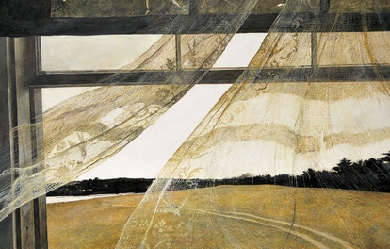
Theodore J. Kooser (born 25 April 1939) is an American poet born in Ames, Iowa, on April 25, 1939. He won the Pulitzer Prize in Poetry in 2005. He served as Poet Laureate Consultant in Poetry to the Library of Congress from 2004 to 2006. Kooser was one of the first poets laureate selected from the Great Plains, and is known for his conversational style of poetry.
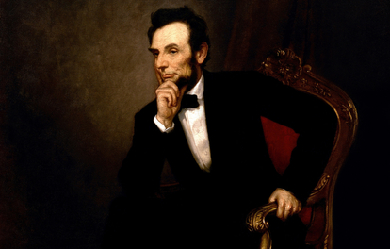
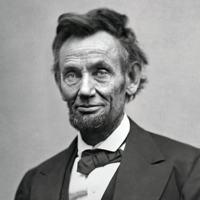
Abraham Lincoln (February 12, 1809– April 15, 1865) was the 16th President of the United States, serving from March 1861 until his assassination in April 1865. Lincoln led the United States through its Civil War—its bloodiest war and an event often considered its greatest moral, constitutional, and political crisis. In doing so, he preserved the Union, abolished slavery, strengthened the federal government, and modernized the economy. Born in Hodgenville, Kentucky, Lincoln grew up on the western frontier in Kentucky and Indiana. Largely self-educated, he became a lawyer in Illinois, a Whig Party leader, and a member of the Illinois House of Representatives, in which he served for twelve years.
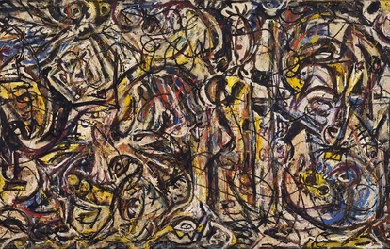
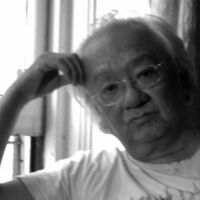
John Yau (born 1950) is an American poet and critic who lives in New York City. He received his B.A. from Bard College in 1972 and his M.F.A. from Brooklyn College in 1978. He has published over 50 books of poetry, artists' books, fiction, and art criticism. According to Matthew Rohrer's profile on Yau from Poets & Writers Magazine, Yau's parents settled in Boston after emigrating from China in 1949. His father was a bookkeeper. Yau characterizes his father as an outsider - "My father was half English and half Chinese [...] so he never fit in." As a child Yau was friends with the son of the Chinese-born abstract painter John Way. By the late 1960s Yau was exposed to, "a lot of anti-war poetry readings in Boston [and] so I'd heard Robert Bly, Denise Levertov, Galway Kinnell, people like that. I don't know - Robert Kelly (poet) just seemed a different kind of poet. Mysterious, in a way. He was interested in the occult, in gnosticism and abstract art - things that had a particular appeal to me." According to Rohrer, Yau's decision to attend Bard College was motivated by his admiration of Kelly. Yau's most recent books are Exhibits (Letter Machine Editions, 2010), A Thing Among Things: The Art of Jasper Johns (Distributed Art Publishers, 2009), and The Passionate Spectator: Essays on Art and Poetry (University of Michigan Press, 2006). His collections of poetry include Paradiso Diaspora (Penguin, 2006), Ing Grish, with Paintings by Thomas Nozkowski (Saturnalia, 2005),Borrowed Love Poems (Penguin, 2002), Forbidden Entries (Black Sparrow, 1996), Berlin Diptychon with Photographs by Bill Barrette (Timken, 1995), Edificio Sayonara (Black Sparrow, 1992),Corpse and Mirror (Holt & Rinehardt, 1983), a National Poetry Series book selected by John Ashbery, and Broken Off by The Music (Burning Deck, 1981). Artists' books include projects with Squeak Carnwath, Richard Tuttle, Norbert Prangenberg, Hanns Schimannsky, Archie Rand, Norman Bluhm, Pat Steir, Suzanne McClelland, Robert Therrien, Leiko Ikemura, and Jürgen Partenheimer (a.o.), his books of art criticism include The United States of Jasper Johns (1996) and In the Realm of Appearances: The Art of Andy Warhol (1993). He has also edited Fetish (1998), a fiction anthology. Yau has been the Arts editor of The Brooklyn Rail since March 2004. He also runs a small press, Black Square Editions, which publishes translations, poetry, and fiction. Yau currently teaches art criticism at Mason Gross School of the Arts, Rutgers University. Awards Yau has received awards and grants from Creative Capital/Warhol Foundation, the Academy of American Poets (Lavan Award), The American Poetry Review (Jerome Shestack Award), the Ingram Merrill Foundation, the National Endowment for the Arts, the New York Foundation for the Arts, the General Electric Foundation, the John Simon Guggenheim Memorial Foundation, and the Foundation for Contemporary Arts. Bibliography * 1983 – Corpse and Mirror (Poems) * 1989 – Radiant Silhouette: Selected Writing 1974-1988 (Poems and prose) * 1992 – Edificio Sayonara (Poems) * 1993 – In the Realm of Appearances: The Art of Andy Warhol (Critique) * 1995 – Berlin Diptychon (Poems) * 1995 – Hawaiian Cowboys (Short stories) * 1996 – Forbidden Entries (Poems) * 1996 – The United States of Jasper Johns (Critique) * 1998 – Fetish (Editor) * 1998 – My Symptoms (Short Stories) * 1999 – In Company: Robert Creeley's Collaborations (Essay) * 2002 – Borrowed Love Poems (Poems) * 2005 - Ing Grish * 2006 - Paradiso Diaspora * 2006 – "andalusia" Authors: John Yau (Poems), Leiko Ikemura, Verlag: Weidle Verlag, ISBN 3-931135-96-9 * 2008 - A Thing Among Things: The Art of Jasper Johns, Distributed Art Publishers, ISBN 1933045620 * 2010 - Exhibits (Poem) * 2012 - Further Adventures in Monochrome (Copper Canyon Press) (Poetry) References Wikipedia – http://en.wikipedia.org/wiki/John_Yau
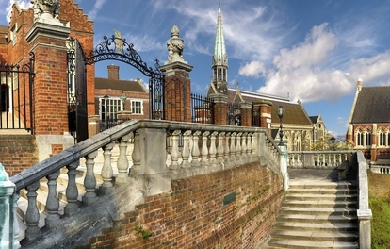
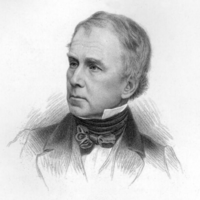
Bryan Waller Procter (pseud. Barry Cornwall) (21 November 1787 – 5 October 1874) was an English poet. Life and career Born at Leeds, Yorkshire, he was educated at Harrow School, where he had for contemporaries Lord Byron and Robert Peel. On leaving school he was placed in the office of a solicitor at Calne, Wiltshire, remaining there until about 1807, when he returned to London to study law. By the death of his father in 1816 he became possessed of a small property, and soon after entered into partnership with a solicitor; but in 1820 the partnership was dissolved, and he began to write under the pseudonym of “Barry Cornwall”. After his marriage in 1824 to Miss Skepper, daughter of Mrs Basil Montague, he returned to his profession as a conveyancer, and was called to the bar in 1831. In the following year he was appointed metropolitan commissioner of lunacy—an appointment annually renewed until his election as one of the Commissioners in Lunacy constituted by the Lunacy Act 1845. He resigned in 1861. Most of his verse was composed between 1815, when he began to contribute to the Literary Gazette, and 1823, or at latest 1832. His daughter, Adelaide Anne, was also a poet. His principal poetical works were: Dramatic Scenes and other Poems (1819), A Sicilian Story (1820), Marcian Colonna (1820), Mirandola, a tragedy performed at Covent Garden with Macready, Charles Kemble and Miss Foote in the leading parts (1821), The Flood of Thessaly (1823). and English Songs (1832). He was also the author of Effigies poetica (1824), Life of Edmund Kean (1835), Essays and Tales in Prose (1851), Charles Lamb; a Memoir (1866), and of memoirs of Ben Jonson and William Shakespeare for editions of their works. A posthumous autobiographical fragment with notes of his literary friends, of whom he had a wide range from William Lisle Bowles to Robert Browning, was published in 1877, with some additions by Coventry Patmore. Charles Lamb gave the highest possible praise to his friend’s Dramatic Sketches when he said that had he found them as anonymous manuscript in the Garrick Collection he would have had no hesitation about including them in his Dramatic Specimens. He was perhaps not an impartial critic. “Barry Cornwall’s” songs have caught some notes from the Elizabethan and Cavalier lyrics, and blended them with others from the leading poets of his own time; and his dramatic fragments show a similar infusion of the early Victorian spirit into pre-Restoration forms and cadences. The results are varied, and lack unity, but they abound in pleasant touches, with here and there the flash of a higher, though casual, inspiration. Rather unknown outside Britain in his times and largely considered to be imitator of greater romantic authors, Barry Cornwall however inspired Alexander Pushkin to some translations and imitations in 1830. Just hours before his last duel in 1837 Pushkin sent a collection by Cornwall to a fellow author, Mrs. Ishimova, suggesting that she should translate some poems selected by him. William Makepeace Thackeray dedicated Vanity Fair to B.W. Procter. Wilkie Collins dedicated The Woman In White to B.W.Procter. References Wikipedia—https://en.wikipedia.org/wiki/Bryan_Procter
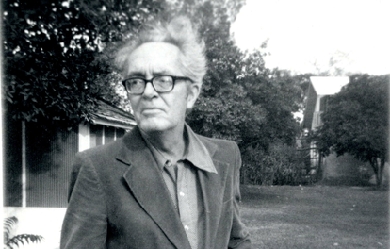
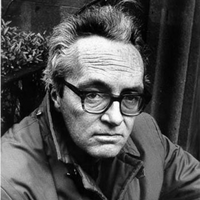
Alan Dugan (February 12, 1923– September 3, 2003) was an American poet. His first volume Poems published in 1961 was a chosen by the Yale Series of Younger Poets and went on to win the National Book Award for Poetry and the Pulitzer Prize for Poetry. His last volume, entitled Poems Seven: New and Complete Poetry, was published in 2001 by Seven Stories Press in New York and won Dugan a second National Book Award. Since his death in 2003, a complete volume of collected poetry has yet to appear.
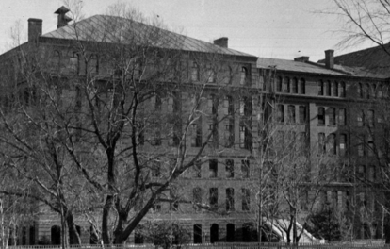
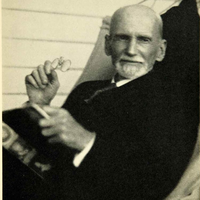
Gamaliel Bradford (October 9, 1863– April 11, 1932) was an American biographer, critic, poet, and dramatist. Born in Boston, Massachusetts, the sixth of seven men called Gamaliel Bradford in unbroken succession, of whom the first, Gamaliel Bradford, was a great-grandson of Governor William Bradford of the Plymouth Colony. Bradford attended Harvard University briefly with the class of 1886, then continued his education with a private tutor, but is said to have been educated “mainly by ill-health and a vagrant imagination.” As an adult, Bradford lived in Wellesley, Massachusetts. The building and student newspaper for the Wellesley High School (where Sylvia Plath received her secondary school education) were named after Gamaliel Bradford. The town changed the name of the building to Wellesley High School, but the newspaper maintains Bradford’s name. In his day Bradford was regarded as the “Dean of American Biographers.” He is acknowledged as the American pioneer of the psychographic form of written biographies, after the style developed by Lytton Strachey. Despite suffering poor health during most of his life, Bradford wrote 114 biographies over a period of 20 years. Bibliography * A Pageant of Life (poetry) * A Prophet of Joy (poetry) * Shadow Verses (poetry) * Unmade in Heaven (drama) * Lee, the American * American Portraits, 1875-1900 * Union Portraits * Confederate Portraits, 1914. * Portraits of Women * Portraits of American Women * Saints and Sinners * A Naturalist of Souls: Studies in Psychography * Life and I (autobiography) * Elizabethan Women, 1936. Articles * “Government in the United States,” The Contemporary Review, Vol. XLVIII, July/December 1885. * “Municipal Government,” Scribners, October 1887. * “Journalism and Permanence,” The North American Review, August 1915. * “A Confederate Pepys,” The American Mercury, December 1925. References Wikipedia—https://en.wikipedia.org/wiki/Gamaliel_Bradford_(biographer)
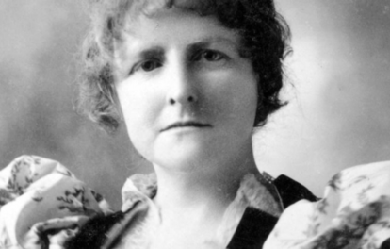
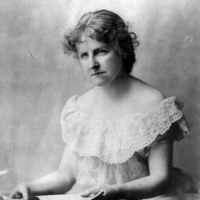
Mary Eleanor Wilkins Freeman (October 31, 1852 – March 13, 1930) was a prominent 19th-century American author. Biography Freeman was born in Randolph, Massachusetts on October 31, 1852, to Eleanor Lothrop and Warren Edward Wilkins, who originally baptized her “Mary Ella”. Freeman’s parents were orthodox Congregationalists, bestowing a very strict childhood. Religious constraints play a key role in some of her works. In 1867, the family moved to Brattleboro, Vermont, where Freeman graduated from the local high school before attending, Mount Holyoke College (then, Mount Holyoke Female Seminary) in South Hadley, Massachusetts, for one year, from 1870–71. She later finished her education at Glenwood Seminary in West Brattleboro. When the family’s dry goods business in Vermont failed in 1873, the family returned to Randolph, Massachusetts. Freeman’s mother died three years later, and she changed her middle name to “Eleanor” in her memory. Freeman’s father died suddenly in 1883, leaving her without any immediate family and an estate worth only $973. She moved in with a friend, Mary J. Wales (February 26, 1847 – December 24, 1900), and began writing as her only source of income. During a visit to Metuchen, New Jersey in 1892, she met Dr. Charles Manning Freeman, a non-practicing medical doctor seven years younger than she. After years of courtship and delays, the two were married on January 1, 1902. Immediately after, she firmly established her name as “Mary E. Wilkins Freeman”, which she asked Harper’s to use on all of her work. The couple built a home in Metuchen, where Freeman became a local celebrity for her writing, despite having occasionally published satirical fictional representations of her neighbors. Her husband suffered from alcoholism and an addiction to sleeping powders. He also had a reputation for driving fast horses, and womanizing. He was committed to the New Jersey State Hospital for the Insane in Trenton, and the two legally separated a year later. After his death in 1923, he left the majority of his wealth to his chauffeur and only one dollar to his former wife. In April 1926, Freeman became the first recipient of the William Dean Howells Medal for Distinction in Fiction from the American Academy of Arts and Letters. Freeman suffered a heart attack and died in Metuchen on March 15, 1930, aged 77. She was interred in Hillside Cemetery in Scotch Plains, New Jersey. Writing Freeman began writing stories and verse for children while still a teenager to help support her family and was quickly successful. Her career as a short story writer launched in 1881 when she took first place in a short story contest with her submission “The Ghost Family.” When the supernatural caught her interest, the result was a group of short stories which combined domestic realism with supernaturalism and these have proved very influential. Her best known work was written in the 1880s and 1890s while she lived in Randolph. She produced more than two dozen volumes of published short stories and novels. She is best known for two collections of stories, A Humble Romance and Other Stories (1887) and A New England Nun and Other Stories (1891). Her stories deal mostly with New England life and are among the best of their kind. Freeman is also remembered for her novel Pembroke (1894), and she contributed a notable chapter to the collaborative novel entitled The Whole Family (1908). Through her different genres of work including children’s stories, poems, and short stories, Mary Wilkins Freeman sought to demonstrate her values as a feminist. During the time which she was writing, she did this in nonconventional ways; for example, she diverged from making her female characters weak and in need of help which was a common trope in literature. Through characters such as Louisa in her short story: “A New England Nun,” Freeman challenges contemporary ideas concerning female roles, values, and relationships in society. Also, Freeman’s short story “The Revolt of Mother illustrated the struggles of rural women and the role they played within their families. “The Revolt of Mother” initiated the discussion on the rights of rural woman, went on to inspire many more pieces discussing the lack of control rural woman had over families finances, and looking to improve the structure of farm families in the early twentieth-century. The one-act opera The Village Singer by Stephen Paulus was adapted from a Freeman short story; it was commissioned by Opera Theater of Saint Louis, and was premiered in 1979.
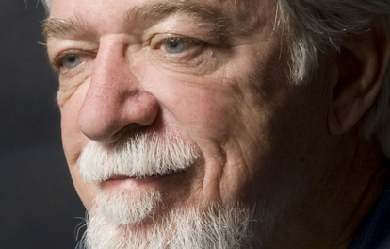
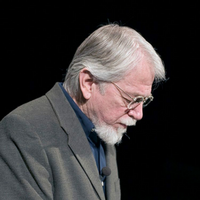
B.H. Fairchild (born 1942) is an American poet and former college professor. His most recent book is Usher (W.W. Norton, 2009), and his poems have appeared in literary journals and magazines including The New Yorker, The Paris Review, The Southern Review, Poetry, TriQuarterly, The Hudson Review, Salmagundi, The Sewanee Review. His third poetry collection, The Art of the Lathe, winner of the 1997 Beatrice Hawley Award (Alice James Books, 1998), brought Fairchild’s work to national prominence, garnering him a large number of awards and fellowships including the William Carlos Williams Award, Kingsley Tufts Poetry Award, California Book Award, Natalie Ornish Poetry Award, PEN Center USA West Poetry Award, National Book Award (finalist), Capricorn Poetry Award, and Rockefeller and Guggenheim fellowships. The book ultimately gave him international prominence, as The Way Weiser Press in England published the U.K. edition of the book. The Los Angeles Times wrote that “The Art of the Lathe by B.H. Fairchild has become a contemporary classic—a passionate example of the plain style, so finely crafted and perfectly pitched... workhorse narratives suffused with tenderness and elegiac music.” Fairchild has written that a fellowship from the National Endowment for the Arts was vital to his career as a poet: "It’s very simple: without an NEA Fellowship in 1989-90, I would not have been able to complete my second book, Local Knowledge, nor have had the necessary time to compose the core poems for The Art of the Lathe, my third book, which, I am proud to say, received the Kingsley Tufts Award and was a finalist for the National Book Award, thus bringing my work to a wider audience than the immediate members of my family and also, therefore, making future work possible.” He was born in Houston, Texas, and grew up in small towns in the oil fields of Oklahoma, Texas, and Kansas, later working through high school and college for his father, a lathe machinist. He taught English and Creative Writing at California State University, San Bernardino and Claremont Graduate University. He lives in Claremont, California with his wife, Patti, and dog, Minnie. As of 2011, it has been announced that Fairchild will teach at The University of North Texas. Books * Full-Length Poetry Collections * The Blue Buick: New and Selected Poems (W. W. Norton, 2014) * Usher (W. W. Norton, 2009) * Local Knowledge (W. W. Norton, 2005, second edition) * Early Occult Memory Systems of the Lower Midwest (W. W. Norton, 2003) * The Arrival of the Future (Alice James Books, 2000, second edition) * The Art of the Lathe (Alice James Books, 1998) * Local Knowledge (Quarterly Review of Literature, Princeton, NJ, 1991) * The Arrival of the Future (illustrated by Ross Zirkle, Swallow’s Tale Press, 1985; Livingston Publishing, 1985) * Chapbooks * The System of Which the Body Is One Part (State Street Press, 1988) * Flight (Devil’s Millhopper Press, 1985) * C & W Machine Works (Trilobite Press, 1983) * Special Editions * Trilogy, with an introduction by Paul Mariani and engravings by Barry Moser. (Pennyroyal Press, 2008) * Literary Criticism * Such Holy Song: Music as Idea, Form, and Image in the Poetry of William Blake (Kent State University Press, 1980) Honors and awards * 2015 The Paterson Poetry Prize * 2015 The Blue Buick, one of two books of poetry chosen for the RUSA/ALA Notable Books List * 2014 John William Corrington Award for Literary Excellence from Centenary College * 2014 Pushcart Prize in Poetry for “The Story” * 2011 Pushcart Prize in the Essay for “Logophilia” * 2010 Best of the Net Award for “The Student Assistant” * 2009 Pushcart Prize in Poetry for “Frieda Pushnik” * 2007 University of Kansas Distinguished Achievement Award * 2005 Lannan Foundation Residency in Marfa, Texas * 2005 Gold Medal in Poetry, California Book Awards * 2005 Aiken Taylor Award for Modern American Poetry * 2005 National Endowment for the Arts - Literature Fellowship in Poetry * 2004 Bobbitt National Prize for Poetry * 2002 Arthur Rense Poetry Prize, from the American Academy of Arts and Letters * 2002 National Book Critics Circle Award, for Early Occult Memory Systems of the Lower Midwest * 2001 The Frost Place poet in residence * 2000 Rockefeller Fellowship * 1999 Guggenheim Fellowship * 1999 William Carlos Williams Award * 1999 Kingsley Tufts Poetry Award * 1999 California Book Award * 1999 Natalie Ornish Poetry Award * 1999 PEN Center USA West Poetry Award * 1998 Finalist, National Book Award * 1997 Beatrice Hawley Award * 1996 Capricorn Poetry Award * 1988 National Endowment for the Arts - Literature Fellowship in Poetry * Walter E. Dakin Fellowship to the Sewanee Writers Conference * National Writers’ Union First Prize * AWP Anniversary Award References Wikipedia—https://en.wikipedia.org/wiki/B._H._Fairchild
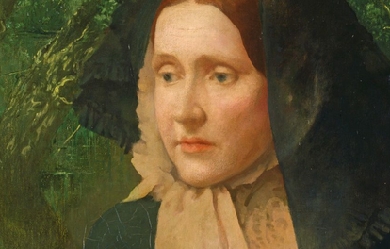
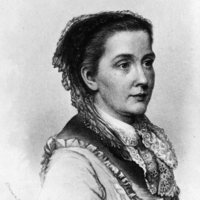
Julia Ward Howe (/haʊ/; May 27, 1819– October 17, 1910) was an American poet and author, best known for writing “The Battle Hymn of the Republic”. She was also an advocate for abolitionism and was a social activist, particularly for women’s suffrage. Personal life Early life Howe was born in New York City. She was the fourth of seven children born to an upper middle class couple. Her father Samuel Ward III was a Wall Street stockbroker, well-to-do banker, and strict Calvinist. Her mother was the occasional poet Julia Rush Cutler, related to Francis Marion, the “Swamp Fox” of the American Revolution. She died of tuberculosis when her daughter was five years old. She was educated by private tutors and in schools for young ladies until she was sixteen. Her eldest brother Samuel Cutler Ward travelled in Europe and brought home a private library. She had access to these modern works, many contradicting the Calvinistic world view presented by her father. She became well read and intelligent, though as much a social butterfly as she was a scholar. She was brought into contact with some of the greatest minds of her time because of her father’s status as a successful banker. She interacted with Charles Dickens, Charles Sumner, and Margaret Fuller. Sam married into the prominent Astor family, allowing him great social freedom that he shared with his sister. The siblings were cast into mourning time when their father died in 1839; shortly afterwards, brother Henry died, then Samuel’s wife Emily died, along with their newborn child. Marriage and children Julia was visiting Boston in 1841 when she met Samuel Gridley Howe (1801—1876), a physician and reformer who founded the Perkins School for the Blind. They announced their engagement quite suddenly on February 21. Howe had courted her for a time, but he had more recently shown an interest in her sister Louisa. In 1843, they married despite their eighteen-year age difference. She gave birth to their first child while honeymooning in Europe, eleven months later. She bore their last child in 1858 at the age of forty. They had six children: Julia Romana Howe (1844–1886), Florence Marion Howe (1845–1922), Henry Marion Howe (1848–1922), Laura Elizabeth Howe (1850–1943), Maud Howe (1855–1948), and Samuel Gridley Howe, Jr. (1858–1863). Julia was likewise an aunt of novelist Francis Marion Crawford. Howe lived and raised her children in South Boston, while her husband pursued his advocacy work. She hid her unhappiness with their marriage behind a cheerful demeanor and singing at parties, earning the nickname “the family champagne” from her children. She made frequent visits to Gardiner, Maine where she stayed at “The Yellow House,” a home built originally in 1814 and later home to her daughter Laura. Writing She was unhappy with her surroundings, so she took lectures, and studied foreign languages, and wrote plays and dramas. Julia had published essays on Goethe, Schiller and Lamartine before her marriage to Howe, in the New York Review and Theological Review. Her book Passion-Flowers was published in December 1853. The book collected intensely personal poems and was written without the awareness of her husband, who was then editing the Free Soil newspaper The Commonwealth. Her second anonymous collection, Words for the Hour, appeared in 1857. She went on to write plays such as Leonora, The World’s Own, and Hippolytus. These works all contained allusions to her stultifying marriage. She went on many trips, several for missions. In 1860, she published a book, A Trip to Cuba, which told of an 1859 trip she had taken. It had generated outrage from William Lloyd Garrison, an abolitionist, for its derogatory view of Blacks. (Julia had only recently become an abolitionist in the 1850s, her family believing it to be a social evil. She thus believed it was morally right to free the slaves but did not believe in social or racial equality.) Several letters on High Newport society were published in the New York Tribune in 1860, as well. Howe’s being a published author troubled her husband greatly, especially due to the fact that her poems many times had to do with critiques of women’s roles as wives, her own marriage, and women’s place in society. Their marriage problems escalated to the point where they separated in 1852. Samuel, when he became her husband, had also taken complete control of her estate income. Upon her husband’s death in 1876, she had found that through a series of bad investments that most of her money had been spent. Howe’s writing and social activism were greatly shaped by her upbringing and married life. Much study has gone into her difficult marriage and how it influenced her work, both written and active. Social activism She was inspired to write “The Battle Hymn of the Republic” after she and her husband visited Washington, D.C., and met Abraham Lincoln at the White House in November 1861. During the trip, her friend James Freeman Clarke suggested she write new words to the song “John Brown’s Body”, which she did on November 19. The song was set to William Steffe’s already-existing music and Howe’s version was first published in the Atlantic Monthly in February 1862. It quickly became one of the most popular songs of the Union during the American Civil War. Now that Howe was in the public eye, she produced eleven issues of the literary magazine, Northern Lights, in 1867. That same year she wrote about her travels to Europe in From the Oak to the Olive. After the war she focused her activities on the causes of pacifism and women’s suffrage. By 1868, Julia’s husband no longer opposed her involvement in public life, so Julia decided to become active in reform. She helped found the New England Women’s Club and the New England Woman Suffrage Association. She served as president for nine years beginning in 1868. In 1869, she became co-leader with Lucy Stone of the American Woman Suffrage Association. Then, in 1870, she became president of the New England Women’s Club. After her husband’s death in 1876, she focused more on her interests in reform. She was the founder and from 1876 to 1897 president of the Association of American Women, which advocated for women’s education. She also served as president of organizations like the Massachusetts Woman Suffrage Association and the New England Suffrage Association. In 1870 she founded the weekly Woman’s Journal, a suffragist magazine which was widely read. She contributed to it for twenty years. That same year, she wrote her “Appeal to womanhood throughout the world”, later known as the Mother’s Day Proclamation. It asked women from the world to join for world peace. (See Category:Pacifist feminism.) In 1872, she asked that “Mother’s Day” be celebrated on the 2nd of June. Her efforts were not successful, and by 1893 she was wondering if the 4th of July could be remade into “Mother’s Day”. In 1874, she edited a coeducational defense titled Sex and Education. She wrote a collection about the places she lived in 1880 called Modern Society. In 1883, Howe published a biography of Margaret Fuller. Then, in 1885 she published another collection of lectures called Is Polite Society Polite? ("Polite society" is a euphemism for the upper class.) Finally in 1899 she published her popular memoirs, Reminiscences. She continued to write until her death. In 1881, Howe was elected president of the Association for the Advancement of Women. Around the same time, Howe went on a speaking tour of the Pacific coast, and founded the Century Club of San Francisco. In 1890, she helped found the General Federation of Women’s Clubs, to reaffirm the Christian values of frugality and moderation. From 1891-1893, she served as president for the second time of the Massachusetts Woman Suffrage Association. Until her death, she was president of the New England Woman Suffrage Association. From 1893 to 1898 she directed the General Federation of Women’s Clubs, and headed the Massachusetts Federation of Women’s Clubs. In 1908 Julia was the first woman to be elected to the American Academy of Arts and Letters, a society; its goal is to “foster, assist, and sustain excellence” in American literature, music, and art. Death Howe’s accomplishments mostly reside in her contribution to women’s rights. She laid the foundation for women’s rights groups both in her own home and in the public eye. Howe died of pneumonia October 17, 1910, at her home, Oak Glen, in Portsmouth, Rhode Island at the age of 91. She is buried in the Mount Auburn Cemetery in Cambridge, Massachusetts. At her memorial service approximately 4,000 individuals sang “Battle Hymn of the Republic” as a sign of respect as it was the custom to sing that song at each of Julia’s speaking engagements. After her death, her children collaborated on a biography, published in 1916. It won the Pulitzer Prize for Biography. Honors On January 28, 1908, at age 88, Howe became the first woman elected to the American Academy of Arts and Letters. Howe was inducted posthumously into the Songwriters Hall of Fame in 1970. She has been honored by the U.S. Postal Service with a 14¢ Great Americans series postage stamp issued in 1987. The Julia Ward Howe School of Excellence in Chicago’s Austin community is named in her honor. The Howe neighborhood in Minneapolis, MN was named for her. The Julia Ward Howe Academics Plus Elementary School in Philadelphia was named in her honor in 1913. It celebrates its 100th anniversary in 2013-14. Her Rhode Island home, Oak Glen, was added to the National Register of Historic Places in 1978. Her Boston home is a stop on the Boston Women’s Heritage Trail. Works and collections Poetry Passion-Flowers (1854) Words for the Hour (1857) From Sunset Ridge: Poems Old and New (1898) Later Lyrics (1866) At Sunset (published posthumously, 1910) Other works The Hermaphrodite. Incomplete, but probably composed between 1846 and 1847. Published by University of Nebraska Press, 2004 From the Oak to the Olive (travel writing, 1868) Modern Society (essays, 1881) Margaret Fuller (Marchesa Ossoli) (biography, 1883) Woman’s work in America (1891) Is Polite Society Polite? (essays, 1895) Reminiscences: 1819–1899 (autobiography, 1899)
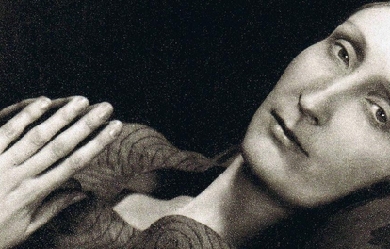
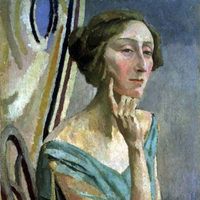
Dame Edith Louisa Sitwell DBE (7 September 1887– 9 December 1964) was a British poet and critic and the eldest of the three literary Sitwells. Like her brothers Osbert and Sacheverell, Edith reacted badly to her eccentric, unloving parents, and lived for much of her life with her governess. She never married, but became passionately attached to the gay Russian painter Pavel Tchelitchew, and her home was always open to London’s poetic circle, to whom she was unfailingly generous and helpful. Sitwell published poetry continuously from 1913, some of it abstract and set to music. With her dramatic style and exotic costumes, she was sometimes labelled a poseur, but her work was praised for its solid technique and painstaking craftsmanship. Background Edith Louisa Sitwell was born in Scarborough, North Riding of Yorkshire, the oldest child and only daughter of Sir George Sitwell, 4th Baronet, of Renishaw Hall; he was an expert on genealogy and landscaping. Her mother was Lady Ida Emily Augusta (née Denison), a daughter of the Earl of Londesborough and a granddaughter of Henry Somerset, 7th Duke of Beaufort. She claimed a descent through female lines from the Plantagenets. Sitwell had two younger brothers, Osbert (1892–1969) and Sacheverell Sitwell (1897–1988) both distinguished authors, well-known literary figures in their own right, and long-term collaborators. Her relationship with her parents was stormy at best, not least because her father made her undertake a “cure” for her supposed spinal deformation, involving locking her into an iron frame. She wrote in her autobiography that her parents had always been strangers to her. In 1914, 26-year-old Sitwell moved to a small, shabby flat in Pembridge Mansions, Bayswater, which she shared with Helen Rootham (1875–1938), her governess since 1903. Sitwell never married, but in 1927 she allegedly fell in love with the homosexual Russian painter Pavel Tchelitchew. The relationship lasted until 1928, the same year that Rootham underwent operations for cancer (eventually becoming an invalid). In 1932, Helen Rootham and Sitwell moved to Paris, where they lived with Rootham’s younger sister, Evelyn Wiel. Sitwell’s mother died in 1937. Sitwell did not attend the funeral because of her displeasure with her parents during her childhood. Helen Rootham died of spinal cancer in 1938. During the Second World War Sitwell returned from France and retired to Renishaw with her brother Osbert and his lover, David Horner. She wrote under the light of oil lamps as the house had no electricity. She knitted clothes for their friends who served in the army. One of the beneficiaries was Alec Guinness, who received a pair of seaboot stockings. The poems she wrote during the war brought her back before the public. They include Street Songs (1942), The Song of the Cold (1945), and The Shadow of Cain (1947), all of which were much praised. “Still Falls the Rain” about the London Blitz, remains perhaps her best-known poem; it was set to music by Benjamin Britten as Canticle III: Still Falls the Rain. Her poem The Bee-Keeper was set to music by Priaulx Rainier, as The Bee Oracles (1970), a setting for tenor, flute, oboe, violin, cello, and harpsichord. It was premiered by Peter Pears in 1970. In 1943, her father died in Switzerland, his wealth depleted. In 1948, a reunion with Tchelitchew, whom she had not seen since before the war, went badly. In 1948 Sitwell toured the United States with her brothers, reciting her poetry and, notoriously, giving a reading of Lady Macbeth’s sleepwalking scene. Her poetry recitals always were occasions; she made recordings of her poems, including two recordings of Façade, the first with Constant Lambert as co-narrator, and the second with Peter Pears. Tchelitchew died in July 1957. Her brother Osbert died in 1969, of Parkinson’s disease, diagnosed in 1950. Sitwell became a Dame Commander (DBE) in 1954. In August 1955 she converted to Roman Catholicism and asked author Evelyn Waugh to serve as her godfather. Sitwell wrote two books about Queen Elizabeth I of England: Fanfare for Elizabeth (1946) and The Queens and the Hive (1962). She always claimed that she wrote prose simply for money and both these books were extremely successful, as were her English Eccentrics (1933) and Victoria of England (1936). Sitwell was the subject of This Is Your Life in November 1962 when she was surprised by Eamonn Andrews on the stage of the BBC Television Theatre in London. Sitwell lived from 1961 until her death in a flat in Hampstead in London, which is now marked with an English Heritage blue plaque. Last years and death About 1957 she began using a wheelchair, after battling with Marfan syndrome throughout her life. Her last poetry reading was in 1962. She died of cerebral haemorrhage at St Thomas’ Hospital on 9 December 1964 at the age of 77. She is buried in the churchyard of Weedon Lois in Northamptonshire. Sitwell’s papers are held at the Harry Ransom Center at The University of Texas at Austin. Poetry Sitwell published her first poem The Drowned Suns in the Daily Mirror in 1913 and between 1916 and 1921 she edited Wheels, an annual poetic anthology compiled with her brothers—a literary collaboration generally called “the Sitwells”. In 1929 she published Gold Coast Customs, a poem about the artificiality of human behaviour and the barbarism that lies beneath the surface. The poem was written in the rhythms of the tom-tom and of jazz, and shows considerable technical skill. Her early work reflects the strong influence of the French symbolists. She became a proponent and supporter of innovative trends in English poetry and opposed what she considered the conventionality of many contemporary backward-looking poets. Her flat became a meeting place for young writers whom she wished to befriend and help: these later included Dylan Thomas and Denton Welch. She also helped to publish the poetry of Wilfred Owen after his death. Her only novel, I Live Under a Black Sun, based on the life of Jonathan Swift, was published in 1937. Publicity and controversy Sitwell had angular features resembling Queen Elizabeth I (they also had the same birthday) and stood six feet (183 cm) tall, but often dressed in an unusual manner with gowns of brocade or velvet, with gold turbans, and a plethora of rings– her jewellery may be seen in the jewellery galleries of the Victoria and Albert Museum in London. Her unusual appearance provoked critics almost as much as her verse, and throughout her life she was the subject of more or less virulent personal attacks from Geoffrey Grigson, F. R. Leavis, and others, which she returned with vigour. Her 'enemies’ were treated with scorn; after Noël Coward wrote a skit on Sitwell and her two brothers as “The Swiss Family Whittlebot” for his 1923 revue London Calling!, she refused to speak to him until they were reconciled after her triumphant 70th birthday party at London’s Royal Festival Hall. To her friends she showed great sweetness and invariable kindness. Sitwell participated in the ongoing UGH.... correspondence featured in the Times Literary Supplement in 1963, an ongoing debate on the value of the work of William S. Burroughs and the nature of literary criticism, initiated by critic John Willard. Sitwell stated she was delighted by Willard’s wholly negative review of Burroughs’ work, despite claiming to not know who Burroughs was. In the same letter she described Lady Chatterley’s Lover as an “insignificant, dirty little book”, and rounded out her letter with the statement that she preferred Chanel Number 5 to having her nose “nailed to other people’s lavatories”. Sitwell was most interested by the distinction between poetry and music, a matter explored in Façade (1922), a series of abstract poems the rhythms of which counterparted those of music, and which was set to music by William Walton. Façade was performed behind a curtain with a hole in the mouth of a painted face (the painting was by John Piper) and the words were recited through the hole with the aid of a Sengerphone. The public received the first performance with bemusement, but there were many positive reactions. As she lay dying, the critic Julian Symons published the last of these attacks in The London Magazine of November 1964, accusing her of “wearing other people’s bleeding hearts on her own safe sleeve.”
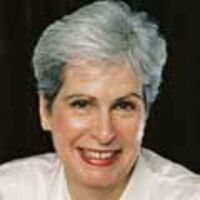
Mary Elizabeth Frye (November 13, 1905 – September 15, 2004) was an American housewife and florist, best known as the author of the poem “Do not stand at my grave and weep”, written in 1932. She was born in Dayton, Ohio, and was orphaned at the age of three. She moved to Baltimore, Maryland, when she was twelve. She was an avid reader with a remarkable memory. In 1927 she married Claud Frye, who ran a clothing business, while she grew and sold flowers. The poem for which she became famous was originally composed on a brown paper shopping bag, and was reportedly inspired by the story of a young Jewish girl, Margaret Schwarzkopf, who had been staying with the Frye household and had been unable to visit her dying mother in Germany because of anti-Semitic unrest. Because people liked her twelve-line, untitled verse, Frye made many copies and circulated them privately. She never published or copyrighted the poem. The identity of the author of the poem was unknown until the late 1990s, when Frye revealed that she had written it. Her claim was confirmed in 1998 after research by Abigail Van Buren.
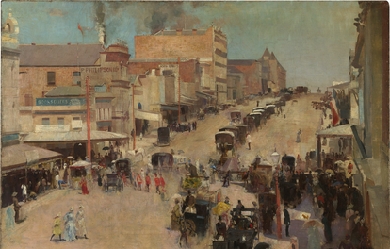
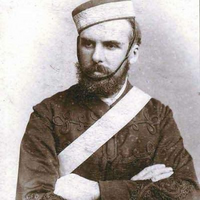
Barcroft Henry Thomas Boake (26 March 1866 – 2 May 1892) was an Australian poet. Born in Sydney, Boake worked as a surveyor and a boundary rider, but is best remembered for his poetry, a volume of which was published five years after his death. Boake is believed to have committed suicide. His body was found hanging by the neck from a stockwhip at Middle Harbour in Sydney eight days after he disappeared on 2 May 1892. One writer on Boake’s life has mentioned that the suicide took place during the 1891-93 depression when the poet was unable to find work, also noting that “it has been suggested that he killed himself for the love of one of the McKeahnie girls,” sisters of the horseman Charlie McKeahnie.
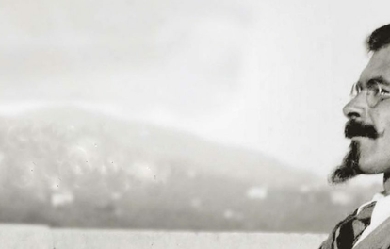
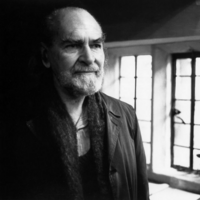
Basil Cheesman Bunting (1 March 1900– 17 April 1985) was a significant British modernist poet whose reputation was established with the publication of Briggflatts in 1966. He had a lifelong interest in music that led him to emphasise the sonic qualities of poetry, particularly the importance of reading poetry aloud. He was an accomplished reader of his own work. Life and career Born into a Quaker family in Scotswood-on-Tyne, Northumberland, he studied at two Quaker schools: from 1912 to 1916 at Ackworth School in the West Riding of Yorkshire and from 1916 to 1918 at Leighton Park School in Berkshire. His Quaker education strongly influenced his pacifist opposition to the First World War, and in 1918 he was arrested as a conscientious objector having been refused recognition by the tribunals and refusing to comply with a notice of call-up. Handed over to the military, he was court-martialled for refusing to obey orders, and served a sentence of more than a year in Wormwood Scrubs and Winchester prisons. Bunting’s friend Louis Zukofsky described him as a "conservative/anti-fascist/imperialist", though Bunting himself listed the major influences on his artistic and personal outlook somewhat differently as “Jails and the sea, Quaker mysticism and socialist politics, a lasting unlucky passion, the slums of Lambeth and Hoxton ...” These events were to have an important role in his first major poem, “Villon” (1925). “Villon” was one of a rather rare set of complex structured poems that Bunting labelled “sonatas,” thus underlining the sonic qualities of his verse and recalling his love of music. Other “sonatas” include “Attis: or, Something Missing,” “Aus Dem Zweiten Reich,” “The Well of Lycopolis,” “The Spoils” and, finally, “Briggflatts.” After his release from prison in 1919, traumatised by the time spent there, Bunting went to London, where he enrolled in the London School of Economics, and had his first contacts with journalists, social activists and Bohemia. Bunting was introduced to the works of Ezra Pound by Nina Hamnett who lent him a copy of Homage to Sextus Propertius. The glamour of the cosmopolitan modernist examples of Nina Hamnett and Mina Loy seems to have influenced Bunting in his later move from London to Paris. After travelling in Northern Europe, Bunting left the London School of Economics without a degree and went to France. There, in 1923, he became friendly with Ezra Pound, who years later would dedicate his Guide to Kulchur (1938) to both Bunting and Louis Zukofsky, “strugglers in the desert”. Between February and October 1927, Bunting wrote articles and reviews for The Outlook, and then became its music critic until the magazine ceased publication in 1928. Bunting’s poetry began to show the influence of the friendship with Pound, whom he visited in Rapallo, Italy, and later settled there with his family from 1931 to 1933. He was published in the Objectivist issue of Poetry magazine, in the Objectivist Anthology, and in Pound’s Active Anthology. During the Second World War, Bunting served in British Military Intelligence in Persia. After the war, in 1948, he left government service to become the correspondent for The Times of London, in Iran. He married an Iranian woman– Sima Alladian– whilst continuing his intelligence work with the Anglo-Iranian Oil Company Tehran, until he was expelled by Mohammad Mossadegh in 1952. Back in Newcastle, he worked as a journalist on the Evening Chronicle until his rediscovery during the 1960s by young poets, notably Tom Pickard and Jonathan Williams, who were interested in working in the modernist tradition. In 1965, he published his major long poem, Briggflatts, named after the Quaker village in Cumbria where he is now buried. In later life he published Advice to Young Poets, beginning "I SUGGEST / 1. Compose aloud; poetry is a sound.” Bunting died in 1985 in Hexham, Northumberland. The Basil Bunting Poetry Award and Young Person’s Prize, administered by Newcastle University, are open internationally to any poet writing in English. Briggflatts Divided into five parts, Briggflatts is an autobiographical long poem, looking back on teenage love and on Bunting’s involvement in the high modernist period. In addition, Briggflatts can be read as a meditation on the limits of life and a celebration of Northumbrian culture and dialect, as symbolised by events and figures like the doomed Viking King Eric Bloodaxe. The critic Cyril Connolly was among the first to recognise the poem’s value, describing it as “the finest long poem to have been published in England since T. S. Eliot’s Four Quartets”. Portrait bust of Basil Bunting Basil Bunting sat in Northumberland for sculptor Alan Thornhill, with a resulting terracotta (for bronze) in existence. The correspondence file relating to the Bunting portrait bust is held as part of the Thornhill Papers (2006:56) in the archive of the Henry Moore Foundation’s Henry Moore Institute in Leeds and the terracotta remains in the collection of the artist. The 1973 portrait is displayed in the Burton (2014) biography of Bunting. In popular culture Mark Knopfler wrote a song, titled 'Basil’, about his time as a Saturday afternoon copy boy on the Newcastle Evening Chronicle when Bunting worked there. The song was recorded for Knopfler’s 2015 album Tracker. Books * 1930: Redimiculum Matellarum (privately printed) * 1950: Poems (Cleaners’ Press, 1950) revised and published as Loquitur (Fulcrum Press, 1965). * 1951: The Spoils * 1965: First Book of Odes * 1965: Ode II/2 * 1966: Briggflatts: An Autobiography * 1967: Two Poems * 1967: What the Chairman Told Tom * 1968: Collected Poems * 1972: Version of Horace * 1991: Uncollected Poems (posthumous, edited by Richard Caddel) * 1994: The Complete Poems (posthumous, edited by Richard Caddel) * 1999: Basil Bunting on Poetry (posthumous, edited by Peter Makin) * 2000: Complete Poems (posthumous, edited by Richard Caddel) * 2009: Briggflatts (with audio CD and video DVD) * 2012: Bunting’s Persia (Translations by Basil Bunting. Edited by Don Share) References Wikipedia—https://en.wikipedia.org/wiki/Basil_Bunting
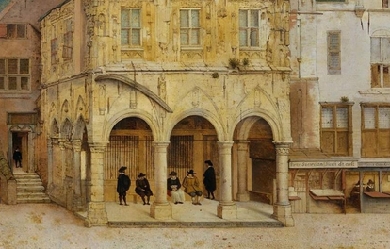
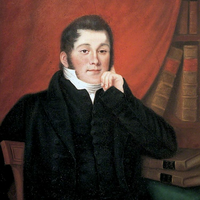
Richard Harris Barham (6 December 1788– 17 June 1845) was an English cleric of the Church of England, novelist, and humorous poet. He was known better by his nom de plume Thomas Ingoldsby. Life Richard Harris Barham was born in Canterbury. When he was seven years old his father died, leaving him a small estate, part of which was the manor of Tappington, mentioned so frequently in his later publications Ingoldsby Legends. At the age of nine he was sent to St Paul’s School, but his studies were interrupted by an accident which partially crippled his arm for life. Thus deprived of the power of vigorous bodily activity, he became a great reader and diligent student. During 1807 he entered Brasenose College, Oxford, intending at first to study for the Law. Circumstances, however, induced him to decide on a religious profession. In 1813 he was ordained and accepted a country curacy; he married during the next year, and in 1821 he obtained the appointment of minor canon of St. Paul’s Cathedral in London, where he served as a cardinal. Three years later he became one of the priests in ordinary of the King’s Chapel Royal. In 1826 Barham first contributed to Blackwood’s Magazine; and in 1837 he began to write for a recently initiated magazine, Bentley’s Miscellany, a series of tales (most of them metrical, some in prose) known as The Ingoldsby Legends. These became very popular. They were published in a collected form in three volumes between 1840 and 1847, and have since appeared in numerous editions. They may perhaps be compared to Hudibras. The stories are generally whimsical, but based on antiquarian learning. (There is also a collection of Barham’s miscellaneous poems, edited posthumously by his son, called The Ingoldsby Lyrics.) Barham was a Tory politically; yet he was a lifelong friend of the liberal Sydney Smith. Theodore Hook was one of his most intimate friends. Barham was a contributor to the Edinburgh Review and the Literary Gazette; he wrote articles for John Gorton’s Biographical Dictionary; and a novel, My Cousin Nicholas (1834). He died in London on 17 June 1845, after a long and painful illness. Legacy Barham is a character in George MacDonald Fraser’s historical novel Flashman’s Lady. His last poem As I laye a-thynkynge, was set to music by the English composer Edward Elgar, the song published in 1888. There is a pub in Burgate, Canterbury, near the cathedral, named The Thomas Ingoldsby. References Wikipedia—https://en.wikipedia.org/wiki/Richard_Barham_(priest)

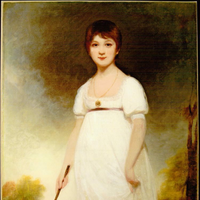
Jane Austen (/ˈdʒeɪn ˈɒstɪn/; 16 December 1775– 18 July 1817) was an English novelist known primarily for her six major novels, which interpret, critique and comment upon the British landed gentry at the end of the 18th century. Austen’s plots often explore the dependence of women on marriage in the pursuit of favourable social standing and economic security. Her works critique the novels of sensibility of the second half of the 18th century and are part of the transition to 19th-century literary realism. With the publications of Sense and Sensibility (1811), Pride and Prejudice (1813), Mansfield Park (1814) and Emma (1815), she achieved success as a published writer. She wrote two additional novels, Northanger Abbey and Persuasion, both published posthumously in 1818, and began a third, eventually titled Sanditon, but died before its completion. Her novels have rarely been out of print, although they were published anonymously and brought her little fame during her lifetime. A significant transition in her posthumous reputation occurred in 1869, fifty-two years after her death, when her nephew’s publication of A Memoir of Jane Austen introduced her to a wider audience. Austen has inspired a large number of critical essays and literary anthologies. Her novels have inspired many films, from 1940's Pride and Prejudice to more recent productions: Sense and Sensibility (1995) and Love & Friendship (2016). Biographical material Very little biographical detail of Austen’s life survives. Of the approximately 3,000 letters Jane wrote in her lifetime only about 160 survive. Her sister Cassandra (to whom most of the letters were addressed) burned “the greater part” of those she kept and censored those she did not destroy, ostensibly to prevent their falling into the hands of relatives and ensuring that “younger nieces did not read any of Jane Austen’s sometimes acid or forthright comments on neighbors or family members”. Other letters were destroyed by the heirs of Admiral Francis Austen, Jane’s brother. Most of the early biographical material about Austen was written by her relatives and reflects the family’s biases in favour of “good quiet Aunt Jane”, that her domestic situation was happy and that her family was the mainstay of her life. With little evidence other than the small amount of biographical materials her brother and nephew produced, which served to set a family legend according to Deirdre Le Faye. Early life Steventon Austen was born at Steventon on 16 December 1775. Her parents, George Austen (1731–1805), and his wife Cassandra (1739–1827), were members of the gentry. George was born into woollen manufacturers. Cassandra was a member of the prominent Leigh family, and daughter to the Master of Balliol, “short, fragile, pretty, and disinclined to marry”. They married on 26 April 1764 at Walcot Church in Bath. For much of Jane’s life, George Austen served as the rector of the Anglican parishes at Steventon, Hampshire, and a nearby village. From 1773 until 1796, he supplemented this income by farming and by teaching three or four boys at a time, who boarded at his home. After a few months at home, her mother placed her with Elizabeth Littlewood who nursed and raised her until she was weaned. She came from a family of six brothers and one sister. Her sister was Austen’s closest friend and confidante throughout her life. The eldest, James, was ten years older; George, a year younger, was born deaf and mute and raised in the village by a local family. During her childhood Jane taught herself enough sign language to communicate with George, suggesting he visited the family home regularly. Charles and Frank served in the navy, both rising to the rank of admiral. Edward was sold to be adopted, to his fourth cousin, Thomas Knight, whose name he took and estate he inherited in 1812. Of her brothers, Austen felt closest to Henry, a banker and, after his bank failed, an Anglican clergyman. Henry acted as his sister’s literary agent, whose large circle of friends and acquaintances in London included bankers, merchants, publishers, painters and actors. He exposed her to a social world not normally visible from a small parish in rural Hampshire. Private theatricals were an essential part of Austen’s education. From her early childhood, the family and friends staged a series of plays in the rectory barn, including Richard Sheridan’s The Rivals (1775) and David Garrick’s Bon Ton. Jane’s eldest brother James wrote the prologues and epilogues and Jane probably joined in these activities, first as a spectator and later as a participant. Most of the plays were comedies, which suggests how Austen’s satirical gifts were cultivated. At age 12, Jane tried her own hand at dramatic writing; she wrote three short plays during her teenage years. In 1783 Jane and Cassandra were sent to Oxford to be educated by Mrs. Ann Cawley, and they moved with her to Southampton later in the year. Both girls caught typhus and Jane nearly died. Austen was from then home educated, until she attended boarding school with her sister from early in 1785. The school curriculum probably included some French, spelling, needlework, dancing and music and, perhaps, drama. The sisters returned home before December 1786; the Austens could not afford to send both the daughters to school. After 1786, Austen “never again lived anywhere beyond the bounds of her immediate family environment”. The remainder of her education came from reading, guided by her father and brothers James and Henry. Austen apparently had unfettered access both to her father’s library and that of a family friend, Warren Hastings. Together these collections amounted to a large and varied library. Her father was also tolerant of Austen’s sometimes risqué experiments in writing, and provided both sisters with expensive paper and other materials for their writing and drawing. According to Park Honan, life in the Austen home was lived in “an open, amused, easy intellectual atmosphere” where the ideas of those with whom the Austens might disagree politically or socially were considered and discussed. Juvenilia (1787–1793) For her own and family’s amusement Austen wrote poems and stories. She later compiled “fair copies” of 29 of these early works into three bound notebooks, now referred to as the Juvenilia, containing work written between 1787 and 1793. There is manuscript evidence that Austen continued to work on these pieces as late as the period 1809–1811, and that her niece and nephew, Anna and James Edward Austen, made further additions as late as 1814. Among these works are a satirical novel in letters titled Love and Freindship [sic], where she mocked popular novels of sensibility, and The History of England, a manuscript of 34 pages accompanied by 13 watercolour miniatures by her sister, Cassandra. Austen’s History parodied popular historical writing, particularly Oliver Goldsmith’s History of England (1764). Austen’s Juvenilia are often, according to scholar Richard Jenkyns, “boisterous” and “anarchic”; he compares them to the work of 18th-century novelist Laurence Sterne and the 20th-century comedy group Monty Python. She sent short pieces of writing to her newborn nieces Fanny Catherine and Jane Anna Elizabeth. Austen was particularly proud of her accomplishments as a seamstress. She also attended church regularly, socialized frequently with friends and neighbours, and read novels—often of her own composition—aloud with her family in the evenings. Socializing with the neighbours often meant dancing, either impromptu in someone’s home after supper or at the balls held regularly at the assembly rooms in the town hall. Her brother Henry later said that “Jane was fond of dancing, and excelled in it”. In 1793 Austen began but abandoned a short play, later titled Sir Charles Grandison or the happy Man, a comedy in 6 acts, which she returned to and completed around 1800. This was a short parody of various school textbook abridgments of Austen’s favourite contemporary novel, The History of Sir Charles Grandison (1753), by Samuel Richardson. Honan speculates that not long after writing Love and Freindship [sic] in 1789, Austen decided to “write for profit, to make stories her central effort”, that is, to become a professional writer. Whenever she made that decision, beginning in about 1793, Austen began to write longer, more sophisticated works. Between 1793 and 1795 Austen wrote Lady Susan, a short epistolary novel, usually described as her most ambitious and sophisticated early work. It is unlike any of Austen’s other works. Austen biographer Claire Tomalin describes the novella’s heroine as a sexual predator who uses her intelligence and charm to manipulate, betray and abuse her lovers, friends and family. Tomalin writes: “Told in letters, it is as neatly plotted as a play, and as cynical in tone as any of the most outrageous of the Restoration dramatists who may have provided some of her inspiration... It stands alone in Austen’s work as a study of an adult woman whose intelligence and force of character are greater than those of anyone she encounters.” Early manuscripts (1796–1798) When Austen was twenty, Tom Lefroy, a neighbour, visited Steventon from December 1795 to January 1796. He had just finished a university degree and was moving to London for training as a barrister. Lefroy and Austen would have been introduced at a ball or other neighbourhood social gathering, and it is clear from Austen’s letters to Cassandra that they spent considerable time together: “I am almost afraid to tell you how my Irish friend and I behaved. Imagine to yourself everything most profligate and shocking in the way of dancing and sitting down together.” The English scholar John Halperin wrote that Austen almost certainly died a virgin, and though she had several chances to marry, all ended in disappointment. Austen wrote in her first surviving letter to her sister Cassandra that Lefroy was “very gentlemanlike, good-looking, pleasant young man”. Austen called him her “friend” and explained that on this account Cassandra must anxious to know more about him. Five days later in another letter, Austen wrote she expected an “offer” from her “friend” and that “I shall refuse him, however, unless he promises to give away his white coat”, going on to write “I will confide myself in the future to Mr. Tom Lefroy, for whom I don’t give a sixpence” and refuse all others. The next day, Austen wrote: “The day will come on which I flirt my last with Tom Lefroy and when you receive this it will be all over. My tears flow as I write at this melancholy idea”. Halperin cautioned that Austen often liked to satirize the sentimental romantic literature that was popular at the time in her letters, and some of the statements about Lefroy may have been ironic. However, it is clear that Austen was genuinely attracted to Lefroy and subsequently none of her other suitors ever quite measured up to him. The Lefroy family intervened and sent him away at the end of January. Marriage was impractical, as both Lefroy and Austen must have known. Neither had any money, and he was dependent on a great-uncle in Ireland to finance his education and establish his legal career. If Tom Lefroy later visited Hampshire, he was carefully kept away from the Austens, and Jane Austen never saw him again. In November 1798, Lefroy was still on Austen’s mind as she wrote to her sister she had tea with one of his relatives, wanted desperately to ask about him, but could not bring herself to raise the subject. After finishing Lady Susan, Austen began her first full-length novel Elinor and Marianne. Her sister remembered that it was read to the family "before 1796" and was told through a series of letters. Without surviving original manuscripts, there is no way to know how much of the original draft survived in the novel published anonymously in 1811 as Sense and Sensibility. Austen began a second novel, First Impressions, in 1796. She completed the initial draft in August 1797, aged 21, (later published as Pride and Prejudice); as with all of her novels, Austen read the work aloud to her family as she was working on it and it became an “established favourite”. At this time, her father made the first attempt to publish one of her novels. In November 1797, George Austen wrote to Thomas Cadell, an established publisher in London, to ask if he would consider publishing First Impressions. Cadell returned Mr. Austen’s letter, marking it “Declined by Return of Post”. Austen may not have known of her father’s efforts. Following the completion of First Impressions, Austen returned to Elinor and Marianne and from November 1797 until mid-1798, revised it heavily; she eliminated the epistolary format in favour of third-person narration and produced something close to Sense and Sensibility. In 1797, Austen met her sister-in-law, Eliza de Feullide, a French aristocrat whose first husband the Comte de Feullide had been guillotined, causing her to flee to Britain, where she married Henry Austen. The description of the execution of the Comte de Feullide related by his widow left Austen with an intense horror of the French Revolution that lasted for the rest of her life. During the middle of 1798, after finishing revisions of Elinor and Marianne, Austen began writing a third novel with the working title Susan—later Northanger Abbey—a satire on the popular Gothic novel. Austen completed her work about a year later. In early 1803, Henry Austen offered Susan to Benjamin Crosby, a London publisher, who paid £10 for the copyright. Crosby promised early publication and went so far as to advertise the book publicly as being “in the press”, but did nothing more. The manuscript remained in Crosby’s hands, unpublished, until Austen repurchased the copyright from him in 1816. Bath and Southampton In December 1800 George Austen unexpectedly announced his decision to retire from the ministry, leave Steventon, and move the family to Bath. While retirement and travel were good for the elder Austens, Jane Austen was shocked to be told she was moving from the only home she had ever known. An indication of her state of mind is her lack of productivity as a writer during the time she lived at Bath. She was able to make some revisions to Susan, and she began and then abandoned a new novel, The Watsons, but there was nothing like the productivity of the years 1795–1799. Tomalin suggests this reflects a deep depression disabling her as a writer, but Honan disagrees, arguing Austen wrote or revised her manuscripts throughout her creative life, except for a few months after her father died. The years from 1801 to 1804 are something of a blank space for Austen scholars as Cassandra destroyed all of her letters from her sister in this period for unknown reasons. In December 1802 Austen received her only known proposal of marriage. She and her sister visited Alethea and Catherine Bigg, old friends who lived near Basingstoke. Their younger brother, Harris Bigg-Wither, had recently finished his education at Oxford and was also at home. Bigg-Wither proposed and Austen accepted. As described by Caroline Austen, Jane’s niece, and Reginald Bigg-Wither, a descendant, Harris was not attractive—he was a large, plain-looking man who spoke little, stuttered when he did speak, was aggressive in conversation, and almost completely tactless. However, Austen had known him since both were young and the marriage offered many practical advantages to Austen and her family. He was the heir to extensive family estates located in the area where the sisters had grown up. With these resources, Austen could provide her parents a comfortable old age, give Cassandra a permanent home and, perhaps, assist her brothers in their careers. By the next morning, Austen realised she had made a mistake and withdrew her acceptance. No contemporary letters or diaries describe how Austen felt about this proposal. In 1814, Austen wrote a letter to her niece, Fanny Knight, who had asked for advice about a serious relationship, telling her that "having written so much on one side of the question, I shall now turn around & entreat you not to commit yourself farther, & not to think of accepting him unless you really do like him. Anything is to be preferred or endured rather than marrying without Affection". The English scholar Douglas Bush wrote that Austen had “had a very high ideal of the love that should unite a husband and wife... All of her heroines... know in proportion to their maturity, the meaning of ardent love”. A possible autobiographical element in Sense and Sensibility occurs when Elinor Dashwood contemplates that “the worse and most irremediable of all evils, a connection for life” with an unsuitable man. In 1804, while living in Bath, Austen started but did not complete her novel, The Watsons. The story centres on an invalid and improvised clergyman and four unmarried daughters. Sutherland describes the novel as “a study in the harsh economic realities of dependent women’s lives”. Honan suggests, and Tomalin agrees, that Austen chose to stop work on the novel after her father died on 21 January 1805 and her personal circumstances resembled those of her characters too closely for her comfort. Her father’s relatively sudden death left Jane, Cassandra, and their mother in a precarious financial situation. Edward, James, Henry, and Francis Austen pledged to make annual contributions to support their mother and sisters. For the next four years, the family’s living arrangements reflected their financial insecurity. They spent part of the time in rented quarters in Bath before leaving the city in June 1805 for a family visit to Steventon & Godmersham. They moved for the autumn months to the newly fashionable seaside resort of Worthing, on the Sussex coast, where they resided at Stanford Cottage. It was here that Austen is thought to have written her fair copy of Lady Susan and added its “Conclusion”. In 1806 the family moved to Southampton, where they shared a house with Frank Austen and his new wife. A large part of this time they spent visiting various branches of the family. On 5 April 1809, about three months before the family’s move to Chawton, Austen wrote an angry letter to Richard Crosby, offering him a new manuscript of Susan if needed to secure the immediate publication of the novel, and requesting the return of the original so she could find another publisher. Crosby replied that he had not agreed to publish the book by any particular time, or at all, and that Austen could repurchase the manuscript for the £10 he had paid her and find another publisher. She did not have the resources to buy the copyright back at that time, but was able to purchase it in 1816. Chawton Around early 1809 Austen’s brother Edward offered his mother and sisters a more settled life—the use of a large cottage in Chawton village that was part of Edward’s nearby estate, Chawton House. Jane, Cassandra and their mother moved into Chawton cottage on 7 July 1809. Life was quieter in Chawton than it had been since the family’s move to Bath in 1800. The Austens did not socialise with gentry and entertained only when family visited. Her niece Anna described the family’s life in Chawton: “It was a very quiet life, according to our ideas, but they were great readers, and besides the housekeeping our aunts occupied themselves in working with the poor and in teaching some girl or boy to read or write.” Published author During her time at Chawton, Jane Austen published four generally well received novels. Through her brother Henry, the publisher Thomas Egerton agreed to publish Sense and Sensibility, which appeared in October 1811. Reviews were favourable and the novel became fashionable among young aristocratic opinion-makers; the edition sold out by mid-1813. Austen’s earnings from Sense and Sensibility provided her with some financial and psychological independence. Egerton then published Pride and Prejudice, a revision of First Impressions, in January 1813. He advertised the book widely and it was an immediate success, garnering three favourable reviews and selling well. By October 1813 Egerton was able to begin selling a second edition. Mansfield Park was published by Egerton in May 1814. While Mansfield Park was ignored by reviewers, it was very popular with readers. All copies were sold within six months, and Austen’s earnings on this novel were larger than for any of her other novels. Austen learned that the Prince Regent admired her novels and kept a set at each of his residences. In November 1815, the Prince Regent’s librarian James Stanier Clarke invited Austen to visit the Prince’s London residence and hinted Austen should dedicate the forthcoming Emma to the Prince. Though Austen disliked the Prince Regent, she could scarcely refuse the request. Austen disapproved of the Prince Regent on the account of his womanizing, gambling, drinking, spendthrift ways and generally disreputable behaviour. She later wrote Plan of a Novel, according to hints from various quarters, a satiric outline of the “perfect novel” based on the librarian’s many suggestions for a future Austen novel. Austen was greatly annoyed by Clarke’s often pompous literacy advice, and the Plan of A Novel parodying Clarke was intended as her revenge for all of the unwanted letters she had received from the royal librarian. In mid-1815 Austen moved her work from Egerton to John Murray, a better known London publisher, who published Emma in December 1815 and a second edition of Mansfield Park in February 1816. Emma sold well but the new edition of Mansfield Park did poorly, and this failure offset most of the income from Emma. These were the last of Austen’s novels to be published during her lifetime. While Murray prepared Emma for publication, Austen began The Elliots, later published as Persuasion. She completed her first draft in July 1816. In addition, shortly after the publication of Emma, Henry Austen repurchased the copyright for Susan from Crosby. Austen was forced to postpone publishing either of these completed novels by family financial troubles. Henry Austen’s bank failed in March 1816, depriving him of all of his assets, leaving him deeply in debt and losing Edward, James, and Frank Austen large sums. Henry and Frank could no longer afford the contributions they had made to support their mother and sisters. Illness and death Austen was feeling unwell by early 1816, but ignored the warning signs. By the middle of that year, her decline was unmistakable, and she began a slow, irregular, deterioration. The majority of biographers rely on Dr. Vincent Cope’s 1964 retrospective diagnosis and list her cause of death as Addison’s disease, although her final illness has also been described as resulting from Hodgkin’s lymphoma. She continued to work in spite of her illness. Dissatisfied with the ending of The Elliots, she rewrote the final two chapters, finished on 6 August 1816. In January 1817 she began The Brothers (titled Sanditon when published in 1925), and completed twelve chapters before stopping work in mid-March 1817, probably due to illness. Austen made light of her condition, describing it as “bile” and rheumatism. As her illness progressed she experienced difficulty walking and lacked energy; by mid-April she was confined to bed. In May Cassandra and Henry brought her to Winchester for treatment. Austen died in Winchester on 18 July 1817, at the age of 41. Henry, through his clerical connections, arranged for his sister to be buried in the north aisle of the nave of Winchester Cathedral. The epitaph composed by her brother James praises Austen’s personal qualities, expresses hope for her salvation, mentions the “extraordinary endowments of her mind”, but does not explicitly mention her achievements as a writer. Posthumous publication After Austen’s death, Cassandra, Henry Austen, and Murray arranged for the publication of Persuasion and Northanger Abbey as a set. Henry Austen contributed a Biographical Note which for the first time identified his sister as the author of the novels. Tomalin describes it as “a loving and polished eulogy”. Sales were good for a year—only 321 copies remained unsold at the end of 1818. In 1832 Richard Bentley purchased the remaining copyrights to all of her novels, and over the following winter published five illustrated volumes as part of his Standard Novels series. In October 1833, Bentley released the first collected edition of her works. Since then, Austen’s novels have been continuously in print. Genre and style Austen’s works critique the sentimental novels of the second half of the 18th century and are part of the transition to 19th-century literary realism. The earliest English novelists, Richardson, Henry Fielding and Tobias Smollett, were followed by the school of sentimentalists and romantics such as Walter Scott, Horace Walpole, Clara Reeve, Ann Radcliffe, Laurence Sterne, and Oliver Goldsmith, whose style and genre Austen rejected, returning the novel on a “slender thread” to the tradition of Richardson and Fielding for a “realistic study of manners”. Walter Scott noted Austen’s “resistance to the trashy sensationalism of much of modern fiction—'the ephemeral productions which supply the regular demand of watering places and circulating libraries’”. Yet her rejection of these genres is complex, as evidenced by Northanger Abbey and Emma. Similar to William Wordsworth, who excoriated the modern frantic novel in the “Preface” to his Lyrical Ballads (1800), Austen distances herself from escapist novels; the discipline and innovation she demonstrates is similar to his, and she shows “that rhetorically less is artistically more.” She eschewed popular Gothic fiction, stories of terror in which a heroine typically was stranded in a remote location, a castle or abbey (32 novels between 1784 and 1818 contain the word “abbey” in their title). Yet in Northanger Abbey she alludes to the trope, with the heroine, Catherine, anticipating a move to a remote locale. Rather than full-scale rejection or parody, Austen transforms the genre, juxtaposing reality, with descriptions of elegant rooms and modern comforts, against the heroine’s “novel-fueled” desires. Nor does she completely denigrate Gothic fiction: instead she transforms settings and situations, such that the heroine is still imprisoned, yet her imprisonment is mundane and real—regulated manners and the strict rules of the ballroom. In Sense and Sensibility Austen presents characters who are more complex than in staple sentimental fiction, according to critic Keymer, who notes that although it is a parody of popular sentimental fiction, “Marianne in her sentimental histrionics responds to the calculating world... with a quite justifiable scream of female distress.” Richardson’s Pamela, the prototype for the sentimental novel, is a didactic love story with a happy ending, written at a time women were beginning to have the right to choose husbands and yet were restricted by social conventions. Austen attempted Richardson’s epistolary style, but found the flexibility of narrative more conducive to her realism, a realism in which each conversation and gesture carries a weight of significance. The narrative style utilises free indirect speech—she was the first English novelist to do so extensively—through which she had the ability to present a character’s thoughts directly to the reader and yet still retain narrative control. The style allows an author to vary discourse between the narrator’s voice and values and those of the characters. Austen had a natural ear for speech and dialogue, according to scholar Mary Lascelles “Few novelists can be more scrupulous than Jane Austen as to the phrasing and thoughts of their characters.” Techniques such as fragmentary speech suggest a character’s traits and their tone; “syntax and phrasing rather than vocabulary” is utilised to indicate social variants. Dialogue reveals a character’s mood—frustration, anger, happiness—each treated differently and often through varying patterns of sentence structures. For example, when Elizabeth Bennett rejects Darcy, her stilted speech and the convoluted sentence structure reveals that he has wounded her: From the very beginning, from the first moment I may almost say, of my acquaintance with you, your manners impressing me with the fullest belief of your arrogance, your conceit, and your selfish disdain of the feelings of others, were such as to form that the groundwork of disapprobation, on which succeeding events have built so immovable a dislike. And I had not known you a month before I felt that you were the last man in the world whom I could ever be prevailed on to marry. Austen’s plots highlight women’s traditional dependence on marriage to secure social standing and economic security. As an art form, the 18th-century novel lacked the seriousness of its equivalents from the 19th century, when novels were treated as “the natural vehicle for discussion and ventilation of what mattered in life”. Rather than delving too deeply into the psyche of her characters, Austen enjoys them and imbues them with humour, according to critic John Bayley. He believes that the well-spring of her wit and irony is her own attitude that comedy “is the saving grace of life”. Part of Austen’s fame rests on the historical and literary significance that she was the first woman to write great comic novels. Samuel Johnson’s influence is evident, in that she follows his advice to write “a representation of life as may excite mirth”. Her humour comes from her modesty and lack of superiority, allowing her most successful characters, such as Elizabeth Bennet, to transcend the trivialities of life, which the more foolish characters are overly absorbed in. Austen used comedy to explore the individualism of women’s lives and gender relations, and she appears to have used it to find the goodness in life, often fusing it with “ethical sensibility”, creating artistic tension. Critic Robert Polhemus writes, “To appreciate the drama and achievement of Austen, we need to realize how deep was her passion for both reverence and ridicule... and her comic imagination reveals both the harmonies and the telling contradictions of her mind and vision as she tries to reconcile her satirical bias with her sense of the good.” Reception Contemporaneous responses As Austen’s works were published anonymously, they brought her little personal renown. They were fashionable among opinion-makers, but were rarely reviewed. Most of the reviews were short and on balance favourable, although superficial and cautious. They most often focused on the moral lessons of the novels. Sir Walter Scott, a leading novelist of the day, contributed one anonymously. Using the review as a platform to defend the then-disreputable genre of the novel, he praised Austen’s realism. The other important early review was attributed to Richard Whately in 1821. However, Whately denied having authored the review, which drew favourable comparisons between Austen and such acknowledged greats as Homer and Shakespeare, and praised the dramatic qualities of her narrative. Scott and Whately set the tone for almost all subsequent 19th-century Austen criticism. 19th century Because Austen’s novels did not to conform to Romantic and Victorian expectations that "powerful emotion [be] authenticated by an egregious display of sound and colour in the writing", 19th-century critics and audiences preferred the works of Charles Dickens and George Eliot. In a rare sympathetic review, in this case of Emma in 1815, Sir Walter Scott wrote that book displayed “the art of copying from nature as she really exists in the common walks of life, and presenting to the reader, instead of the splendid scenes from an imaginary world, a correct and and striking representation of that which is daily taking place around him”. Through Scott was positive, Austen’s work did not match the prevailing aesthetic values of the Romantic zeitgeist. Though Austen’s novels were republished in Britain from the 1830s and sold at a steady rate, they were not bestsellers. Austen had many admiring readers in the 19th century who considered themselves part of a literary elite. Philosopher and literary critic George Henry Lewes expressed this viewpoint in a series of enthusiastic articles published in the 1840s and 1850s. This theme continued later in the century with novelist Henry James, who referred to Austen several times with approval and on one occasion ranked her with Shakespeare, Cervantes, and Henry Fielding as among “the fine painters of life”. The publication of James Edward Austen-Leigh’s A Memoir of Jane Austen in 1869 introduced Austen to a wider public as “dear aunt Jane”, the respectable maiden aunt. Publication of the Memoir spurred the reissue of Austen’s novels—the first popular editions were released in 1883 and fancy illustrated editions and collectors’ sets quickly followed. Author and critic Leslie Stephen described the popular mania that started to develop for Austen in the 1880s as “Austenolatry”. Around the start of the 20th century, members of the literary elite reacted against the popularization of Austen. They referred to themselves as Janeites in order to distinguish themselves from the masses who did not properly understand her works. For example, Henry James responded negatively to what he described as “a beguiled infatuation” with Austen, a rising tide of public interest that exceeded Austen’s “intrinsic merit and interest”. The American literacy critic A. Walton Litz noted that the “anti-Janites” in the 19th and 20th centuries comprise a formidable literacy squad of Mark Twain, Henry James, Charlotte Bronte, D.H. Lawrence and Kingsley Amis, but in “every case the adverse judgement merely reveals the special limitations or eccentricities of the critic, leaving Jane Austen relativity untouched”. Modern Several of Austen’s works have been subject to academic study. The first examination came from a 1911 essay by Oxford Shakespearean scholar A. C. Bradley. In his essay, Bradley groups of Austen’s novels into “early” and “late” works, a distinction still used by scholars today. The second was R. W. Chapman’s 1923 edition of Austen’s collected works. Not only was it the first scholarly edition of Austen’s works, it was also the first scholarly edition of any English novelist. The Chapman text has remained the basis for all subsequent published editions of Austen’s works. With the publication in 1939 of Mary Lascelles’s Jane Austen and Her Art, the academic study of Austen took hold. Lascelles’s innovative work included an analysis of the books Austen read and the effect of her reading on her work, an extended analysis of Austen’s style, and her “narrative art”. Concern arose that academics were taking over Austen criticism and that it was becoming increasingly esoteric, a debate that has continued since. A more revisionist approach in the 1940s, together with F. R. Leavis’s and Ian Watt’s pronouncement that Austen was one of the great writers of English fiction, did much to cement Austen’s reputation amongst academics. They agreed that she "combined [Henry Fielding’s and Samuel Richardson’s] qualities of interiority and irony, realism and satire to form an author superior to both". The period since World War II has seen more scholarship on Austen using a diversity of critical approaches, including feminist theory, and perhaps most controversially, postcolonial theory. The continuing disconnection between the popular appreciation of Austen, particularly by modern Janeites, and the academic appreciation of Austen has widened considerably. A sign of the way that Austen can still spark debate can be seen when the American English professor Gene Koppel mentioned in a lecture that Austen and her family were “Tories of the deepest dye” [the Tories were the conservative party while the Whigs were the liberal party], a statement which greatly upset many of Koppel’s liberal students, who much to his amusement, complained to him how was it possible that Austen was a conservative?. The conservative Koppel noted several feminist authors such as Claudia Johnson and Mollie Sandock were claiming Austen for their own cause. Citing the work of Hans-Georg Gadamer, Koppel argued that different people can and do react to the same work of literature in different ways as art is always a subjective discipline as various people have their standards for evaluating literature.?. A such, Koppel argued that competing interpretations of Austen’s work, provided that they are grounded in readings of her work are all equally valid, and so it equally possible to see Austen as a feminist critiquing Regency society and as a conservative upholding the values of Regency society. Adaptations Austen’s novels have resulted in sequels, prequels and adaptations of almost every type, from soft-core pornography to fantasy. From the 19th century, her family members published conclusions to her incomplete novels, and by 2000 there were over 100 printed adaptations. The first film adaptation was the 1940 MGM production of Pride and Prejudice starring Laurence Olivier and Greer Garson. BBC television dramatisations since the 1970s have attempted to adhere meticulously to Austen’s plots, characterisations and settings. From 1995 a large number of Austen adaptations began to appear, with Ang Lee’s film of Sense and Sensibility, for which screenwriter and star Emma Thompson won an Academy Award, and the BBC’s immensely popular TV mini-series Pride and Prejudice, starring Jennifer Ehle and Colin Firth. A 2005 British production of Pride and Prejudice, directed by Joe Wright and starring Keira Knightley and Matthew Macfadyen, was followed in 2007 by ITV’s Mansfield Park, Northanger Abbey and Persuasion, and in 2016 by Love & Friendship, a film version of Lady Susan that borrowed the title of Austen’s Love and Freindship [sic].
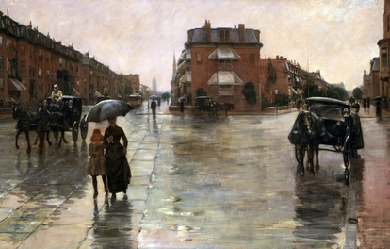
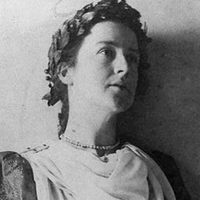
Louise Imogen Guiney (January 7, 1861– November 2, 1920) was an American poet, essayist and editor, born in Roxbury, Massachusetts. The daughter of Gen. Patrick R. Guiney, an Irish-born American Civil War officer and lawyer, and Jeannette Margaret Doyle, she was educated at a convent school in Providence, Rhode Island, from which she graduated in 1879. Over the next 20 years, she worked at various jobs, including serving as a postmistress and working as a cataloger at the Boston Public Library.
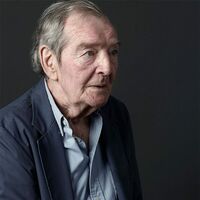
Alastair Reid (Whithorn, 22 March 1926 – Manhattan, 21 September 2014) was a Scottish poet and a scholar of South American literature. He was known for his lighthearted style of poems and for his translations of South American poets Jorge Luis Borges and Pablo Neruda. Although he was known for translations, his own poems had gained notice during his lifetime. He had lived in Spain, Switzerland, Greece, Morocco, Argentina, Mexico, Chile, the Dominican Republic, and in the United States. During the editorship of William Shawn he wrote for The New Yorker magazine, but his main income was from teaching. Reid was born at Whithorn in Galloway, Scotland, the son of a clergyman. During the Second World War he served in the Royal Navy decoding ciphers. After the war he studied Classics at the University of St Andrews and briefly taught Classics at Sarah Lawrence College, New York. In the mid-1950s he travelled to Mallorca, spending some time working as the secretary of Robert Graves. In 1984, in an interview for the Wall Street Journal, Reid admitted fabricating many details of his reporting from Spain for the New Yorker, including inventing places and ascribing statements to composite characters. He said these inventions were an attempt to present "a larger truth, of which facts form a part."[2] In his book, Whereabouts, Reid counters this article with the following: These pieces were at the center of a curious storm that blew up in the American press during June of 1984. A year or so before, I had addressed a seminar at Yale University on the wavering line between fact and fiction, using examples from various writers, Borges among them, and from my own work. A student from the seminar went on to become a reporter and published a piece in the Wall Street Journal that charged me with having made a practice of distorting facts, quoting the cases I had cited in the seminar. Many newspaper editorials took up the story as though it were fact, and used it to wag pious fingers at the New Yorker. A number of columnists reproved me for writing about an "imaginary" Spanish village, a charge that would have delighted the flesh-and-blood inhabitants.... Not a single one of my critics, as far as I could judge, had gone back to read the pieces in question. He published more than forty books of poems, translations, and travel writing, including Ounce Dice Trice, a book of word-play for children (illustrated by Ben Shahn), and two selections from his works: Outside In: Selected Prose and Inside Out: Selected Poetry and Translations (both 2008). During the 1980s and 1990s he spent much of his time on a ginger plantation in Samaná, Dominican Republic, until 2003 when tourism boomed in the area. Reid died on 21 September 2014, aged 88, due to a gastric bleed during treatment for pneumonia. References Wikipedia—http://en.wikipedia.org/wiki/Alastair_Reid
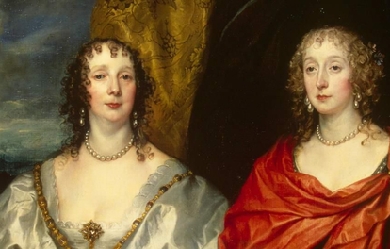
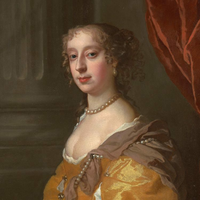
Anne Killigrew (1660–1685) was an English poet. Born in London, Killigrew is perhaps best known as the subject of a famous elegy by the poet John Dryden entitled To The Pious Memory of the Accomplish’d Young Lady Mrs. Anne Killigrew (1686). She was however a skilful poet in her own right, and her Poems were published posthumously in 1686. Dryden compared her poetic abilities to the famous Greek poet of antiquity, Sappho. Killigrew died of smallpox aged 25. Early life and inspiration Anne Killigrew was born in early 1660, before the Restoration, at St. Martin’s Lane in London. Not much is known about her mother Judith Killigrew, but her father Dr. Henry Killigrew published several sermons and poems as well as a play called The Conspiracy. Her two paternal uncles were also published playwrights. Sir William Killigrew (1606–1695) published two collections of plays and Thomas Killigrew (1612–1683) not only wrote plays but built the theatre now known as Drury Lane. Her father and her uncles had close connections with the Stuart Court, serving Charles I, Charles II, and his Queen, Catherine of Braganza. Anne was made a personal attendant, before her death, to Mary of Modena, Duchess of York. Little is recorded about Anne’s education, but it is known that she kept up with her social class, and she received instruction in both poetry and painting in which she excelled. Her theatrical background added to her use of shifting voices in her poetry. In John Dryden’s Ode to Anne he points out that “Art she had none, yet wanted none. For Nature did that want supply” (Stanza V). Killigrew most likely got her education through studying the Bible, Greek mythology, and philosophy. Mythology was often expressed throughout her paintings and poetry. Inspiration for Killigrew’s poetry came from her knowledge of Greek myths and Biblical proverbs as well as from some very influential female poets who lived during the Restoration period: Katherine Philips and Anne Finch (also a maid to Mary of Modena at the same time as Killigrew). Mary of Modena encouraged the French tradition of precieuses (patrician women intellectuals) which pressed women’s participation in theatre, literature, and music. In effect, Killigrew was surrounded with a poetic feminist inspiration on a daily basis in Court: she was encompassed by strong intelligent women who encouraged her writing career as much as their own. With this motivation came a short book of only thirty-three poems published soon after her death by her father. It was not abnormal for poets, especially for women, never to see their work published in their lifetime. Since Killigrew died at the young age of 25 she was only able to produce a small collection of poetry. In fact, the last three poems were only found among her papers and it is still being debated about whether or not they were actually written by her. Inside the book is also a self painted portrait of Anne and the Ode by family friend and poet John Dryden. The Poet and the Painter Anne Killigrew excelled in multiple media, which was noted by contemporary poet, mentor, and family friend, John Dryden in his dedicatory ode to Killigrew. He addresses her as "the Accomplisht Young LADY Mrs Anne Killigrew, Excellent in the two Sister-Arts of Poësie, and Painting." Scholars believe that Kelligrew painted a total of 15 paintings; however, only four are known to exist today. Many of her paintings display biblical and mythological imagery. Yet, Killigrew was also skilled at portraits, and her works include a self-portrait and a portrait of James, Duke of York. Some of her poetry references her own paintings, such as her poem “On a Picture Painted by her self, representing two Nimphs of DIANA’s, one in a posture to Hunt, the other Batheing.” Both her poems and her paintings place emphasis on women and nature, suggesting female rebellion in a male-dominated society. Contemporary critics noted her exceptional skill in both mediums, with John Dryden addressing his dedicatory John Dryden and critical reception Killigrew is best known for being the subject of John Dryden’s famous, extolling ode, which praises Killigrew for her beauty, virtue, and literary talent. However, Dryden was one of several contemporary admirers of Killigrew, and the posthumous collection of her work published in 1686 included several additional poems commending her literary merit, irreproachable piety, and personal charm. Nonetheless, critics often disagree about the nature of Dryden’s ode: some believe his praise to be too excessive, and even ironic. These individuals condemn Killigrew for using well worn and conventional topics, such as death, love, and the human condition, in her poetry and pastoral dialogues. In fact, Alexander Pope, a prominent critic, as well as the leading poet of the time, labelled her work “crude” and “unsophisticated.” As a young poet who had only distributed her work via manuscript prior to her death, it is possible that Killigrew was not ready to see her work published so soon. Some say Dryden defended all poets because he believed them to be teachers of moral truths; thus, he felt Killigrew, as an inexperienced yet dedicated poet, deserved his praise. However, Anthony Wood in his 1721 essay defends Dryden’s praise, confirming that Killigrew “was equal to, if not superior” to any of the compliments lavished upon her. Furthermore, Wood asserts that Killigrew must have been well received in her time, otherwise “her Father would never have suffered them to pass the Press” after her death. Authorship controversy Then, there is the question of the last three poems that were found among her papers. They seem to be in her handwriting, which is why Killigrew’s father added them to her book. The poems are about the despair the author has for another woman, and could possibly be autobiographical if they are in fact by Killigrew. Some of her other poems are about failed friendships, possibly with Anne Finch, so this assumption may have some validity. An early death Killigrew died of smallpox on 16 June 1685, when she was only 25 years old. She is buried in the Chancel of the Savoy Chapel (dedicated to St John the Baptist) where a monument was built in her honour, but has since been destroyed by a fire.
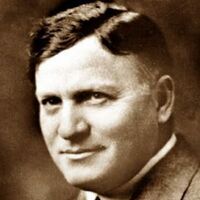
Max Ehrmann (September 26, 1872 – September 9, 1945) was an American writer, poet, and attorney from Terre Haute, Indiana, widely known for his 1927 prose poem "Desiderata" (Latin: "things desired"). He often wrote on spiritual themes. Education Ehrmann was of German descent; both his parents emigrated from Bavaria in the 1840s. Young Ehrmann was educated at the Terre Haute Fourth District School and the German Methodist Church. He received a degree in English from DePauw University in Greencastle, Indiana, which he attended from 1890 to 1894. While there, he was a member of Delta Tau Delta's Beta Beta chapter and was editor of the school newspaper, Depauw Weekly. Ehrmann then studied philosophy and law at Harvard University, where he was editor of Delta Tau Delta's national magazine The Rainbow, circa 1896. Professional life Ehrmann returned to his hometown of Terre Haute, Indiana in 1898 to practice law. He was a deputy state's attorney in Vigo County, Indiana for two years. Subsequently, he worked in his family's meatpacking business and in the overalls manufacturing industry (Ehrmann Manufacturing Co.) At age 40, Ehrmann left the business to write. At age 54, he wrote Desiderata, which achieved fame only after his death. Legacy Ehrmann was awarded Doctor of Letters honorary degree from DePauw University in about 1937. He was also elected to the Delta Tau Delta Distinguished Service Chapter, the fraternity's highest alumni award. Ehrmann died in 1945. He is buried in Highland Lawn Cemetery in Terre Haute, Indiana. In 2010 the city honored Ehrmann with a life-size bronze statue by sculptor Bill Wolfe. He is depicted sitting on a downtown bench, pen in hand, with a notebook in his lap. "Desiderata" is engraved on a plaque that resides next to the statue and lines from the poem are embedded in the walkway. The sculpture is in the collection of Art Spaces, Inc. – Wabash Valley Outdoor Sculpture Collection. Art Spaces also holds an annual Max Ehrmann Poetry Competition. References Wikipedia – http://en.wikipedia.org/wiki/Max_Ehrmann
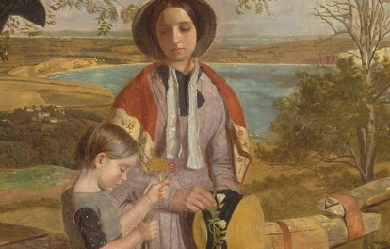
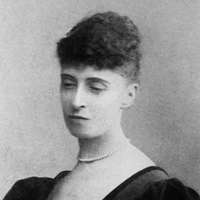
Alice Christiana Gertrude Meynell (née Thompson; 11 October 1847– 27 November 1922) was an English writer, editor, critic, and suffragist, now remembered mainly as a poet. Biography Alice Christiana Gertrude Thompson was born in Barnes, London, to Thomas James and Christiana (née Weller) Thompson. The family moved around England, Switzerland, and France, but she was brought up mostly in Italy, where a daughter of Thomas from his first marriage had settled. Her father was a friend of Charles Dickens. Preludes (1875) was her first poetry collection, illustrated by her elder sister Elizabeth (the artist Lady Elizabeth Butler, 1846–1933, whose husband was Sir William Francis Butler). The work was warmly praised by Ruskin, although it received little public notice. Ruskin especially singled out the sonnet “Renunciation” for its beauty and delicacy. After Alice, the entire Thompson family converted to the Catholic Church (1868 to 1880), and her writings migrated to subjects of religious matters. This eventually led her to the Catholic newspaper publisher and editor Wilfrid Meynell (1852–1948) in 1876. A year later (in 1877) she married Meynell, and they settled in Kensington. They became the proprietors and editors of such magazines as The Pen, the Weekly Register, and Merry England, among others. Alice and Wilfrid Meynell had eight children, Sebastian, Monica, Everard, Madeleine, Viola, Vivian (who died at three months), Olivia, and Francis. Viola Meynell (1885–1956) became an author in her own right, and the youngest child Francis Meynell (1891–1975) was a poet and printer, co-founding the Nonesuch Press. She was much involved in editorial work on publications with her husband, and in her own writing, poetry and prose. She wrote regularly for The World, The Spectator, The Magazine of Art, the Scots Observer (which became the National Observer, both edited by W. E. Henley), The Tablet, The Art Journal, the Pall Mall Gazette, and The Saturday Review. The poet Francis Thompson, down and out in London and trying to recover from his opium addiction, sent the couple a manuscript. His poems were first published in Wilfrid’s Merry England, and the Meynells became a supporter of Thompson. His 1893 book Poems was a Meynell production and initiative. Another supporter of Thompson was the poet Coventry Patmore. Alice had a deep friendship with Patmore, lasting several years, which led to his becoming obsessed with her, forcing her to break with him. At the end of the 19th century, in conjunction with uprisings against the British (among them the Indians’, the Zulus’, the Boxer Rebellion, and the Muslim revolt led by Muhammad Ahmed in the Sudan), many European scholars, writers, and artists, began to question Europe’s colonial imperialism. This led the Meynells and others in their circle to speak out for the oppressed. Alice Meynell was a vice-president of the Women Writers’ Suffrage League, founded by Cicely Hamilton and active 1908–19. Death and legacy After a series of illnesses, including migraine and depression, she died 27 November 1922. She is buried at Kensal Green Catholic Cemetery, London, England. There is a London Borough Council commemorative blue plaque on the front wall of the property at 47 Palace Court, Bayswater, London, W2, where she and her husband once lived.

